- Home
- Cooking
- Roasting
- Frying
- Stir Frying
- Braising
- Steaming
- Baking
- Marinating
- Grilling
- Candy Making
- Deep-Frying
- En Papillote
- Curing
- Glaze
- Skewers and Kebabs
- Infusion
- Juicing
- Gravies and Sauces
- Making Pasta
- Outdoor Cooking
- Poaching
- Reduction
- Sautéing
- Soups and Broths
- Preserving Methods
- Fondue Methods
- Pané Methods
- Making Stocks
- Making Bread
- Griddling Methods
- Savoury Bakes
- Stews
- Making Salads
- About Cooking Crashes
- My Man's Cooking
- Patés and Terrines
- Roasting Meat
- Gardening
- Recipes
- Cakes and Bakes
- Fish
- Desserts
- Soups
- Stir Fry
- Meat
- Starters
- Snacks
- Smoothies
- Brunch
- Savoury Pies
- Vegetarian
- Salads
- Pasta
- Rice Dishes
- Picnic
- Stews
- Jams and Chutneys
- Burgers and Meatballs, Vegballs and Fishballs.
- Festive Recipes
- Sides
- Breakfast
- Pizza and Tartiflette
- Lunch
- BBQ and Grill
- Savoury Bakes and Gratins.
- Fondues
- Raclettes
- Leftover Recipes
- Sauces, Vinaigrettes, Dressings and Dips
- My Recipes
- Seasonal
- Tips
- Ingredients
- Cheese
- Fruits
- Vegetables
- Meat
- Fish
- Eggs
- Breads and Bakes
- Spices
- Herbs
- Sauces, Pastes and Stocks.
- Nuts
- Dairy
- Condiment
- Seaweeds
- Baking Ingredients
- Seeds
- Pastas and Noodles
- Pastries and Batters
- Shellfish and Seafood
- Oils, Vinegars and Cooking Fats
- Leaves
- Preserved Food
- Snacks
- Stuffing and Mincemeat
- Edible Succulents
- Edible Flowers
- Tofu
- The Unusual Delicacies.
- Honey
- Rice
- Sommelier
- Pets
- Wildlife
- News
- Reviews
- About
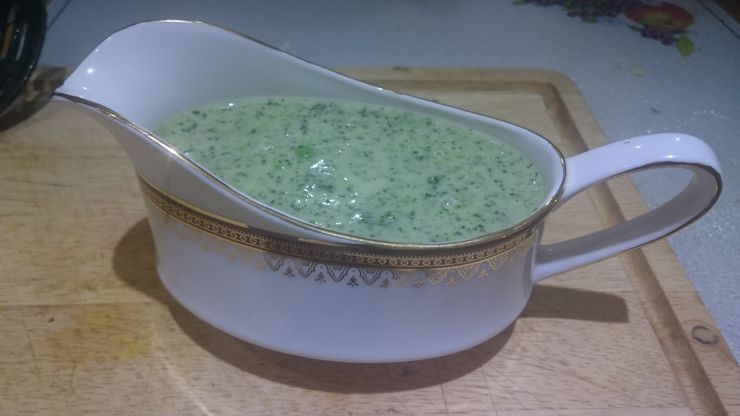
Watercress Sauce. A velvety Number which goes well with Fish Dishes.
Either Gravies, either a Sauce, it is almost human to seek for a Sauce. Where do we get the expression 'Saucy' I wonder? Maybe it is to have a delectable Sauce on our plates. But throughout History we created Sauces to accompany our dishes in one way or another, hot or cold. The Greeks and the Romans in Antiquity had a Sauce called Garum made of Anchovies or fermented Fish which was very popular in their times to add flavour to their dishes.
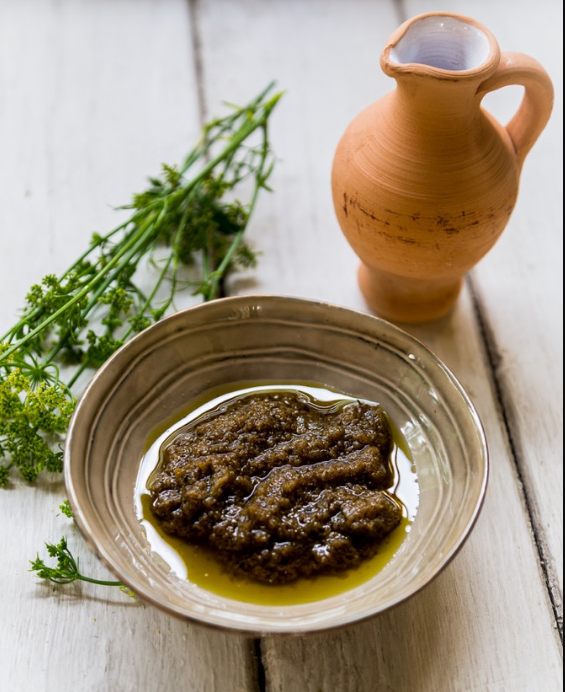
This is Garum. It is in essence a fermented Fish Sauce which could have the consistency of a paste but also could have a much thinner texture depending on your taste, palate, or the recipe you do follow.
Garum is still made nowadays especially in Italy, and within the ages they are different versions which are the result of the old Roman Empire split into the western part and the Eastern part which was the Byzantium Empire. This is not discounting all the different regional areas which made their own version of it. Hence Garum evolved through time.
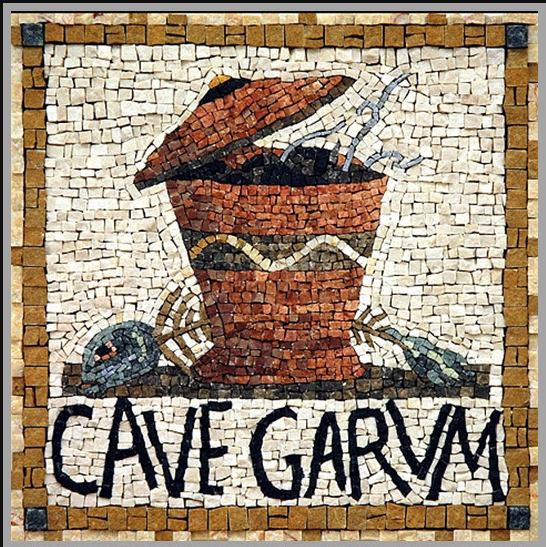
The book of the culinary Historian Marco Gavio de Rubeis which can be found in English: The Cuisine of Antique Rome (which includes) Medieval Cuisine does give a recipe for Garum dating from ancient times.
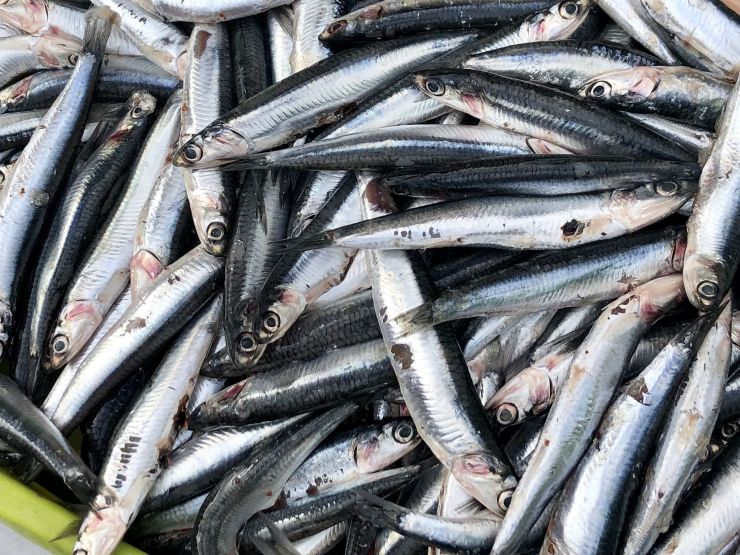
Anchovies. They are not nowadays to the taste of everyone but I rather like them myself in one way or another. For Garum you can also use the Anchovies, Mackerels or Sardines to do it. To process the Sauce it can take a long time but it can also keep for up to three months which balances things out. The Fish are prepared in a large jar which can contain 3.5 kg of Fish to 1 Kg of Sea Salt. The Fish must be used whole entrails and all. It was however chopped for the larger Fish hence the Mackerel. In the jar you do have to alternate layers of Fish and Salt. After some times which can take up to two weeks you will see the Juices from the Fish appears. This is then the time to stir regurlarly every day a fair few times. This process as I said can take long. But in the end you can seperate the Fish from the Sauce they do leave behind. Pliny in the Antiquity did mention that already they were many Garum Sauces available and the one he prefered did use White Wine as well. Of course Garum works very well with Fish dishes as a Sauce. It provides a little saltiness.
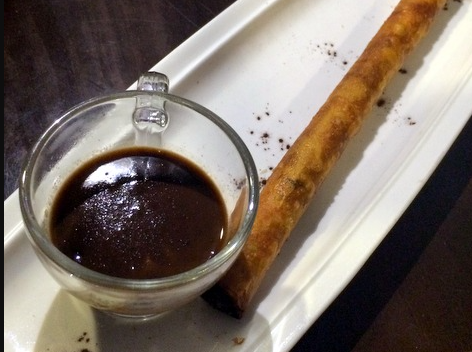
Garum thinned and filtered. It can make a nice dipping Sauce for a lot of Tempuras Veg, Grissinis and Crostinis, Fried Prawns and Fried Whitebaits and Sprats.
And to this days most of us do have Ketchup in our cupboards or fridges and love it upon French Fries, Hamburgers and Wedges. Wink! But do you know its history and the Ingredients that made it to be so popular...? Well you can make a Tomato Sauce and vary somehow its Ingredients when you are making it Home Made.
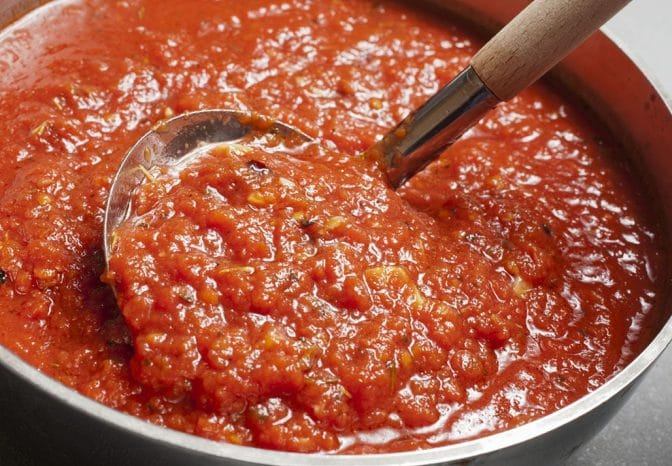
It can take time but also love to do so. But Magic does happen whilst reducing and flavouring your Tomato base Sauce.
Tomatoes are the Main Ingredients and Tomato Purée added to the mix will add even a more Tomatoey flavour. Then you have Garlic, one clove or two, Olive Oil, a Shallot or two, seasonings: Sea Salt and a pinch of Cayenne Pepper. Vinegar, either Red wine, White one or Apple Cyder is another essential part of Ketchups. Then the fun begins by adding Brown Sugar and a little Honey for sweetness. You also can be adventurous by making it your own by putting a Red Chilli in with Smoked Paprika for Smokiness of course to bring a little Spice in.
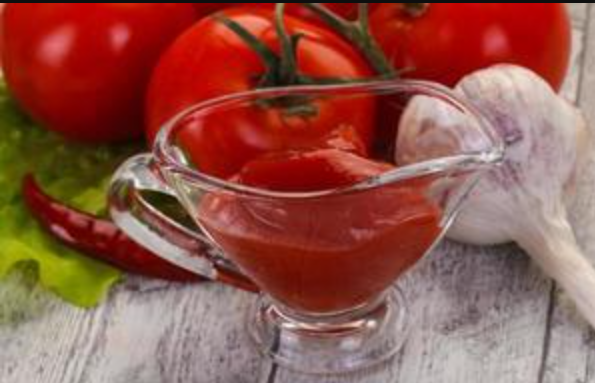
The entire mixture can be blended to a smooth mixture upon to your liking.
You can cook the Ingredients prior or after the blending for about twenty minutes. It will keep in a sterilised sealed Jar for a Month. It can be stored in a Pantry but I prefer to use the Fridge especially if you do open the Jar often.
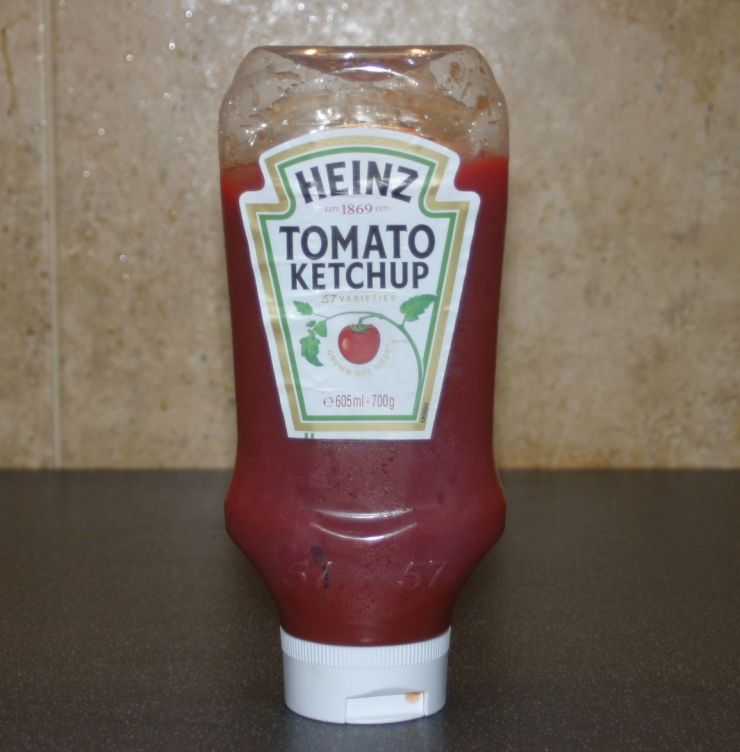
Tomato Ketchup is a Firm favourite in many Households. Let us just say that it is a crowd's pleaser. So to have a home made one is a good idea especially if you do grow Tomatoes. However we will still have the Heinz one in the pantry.
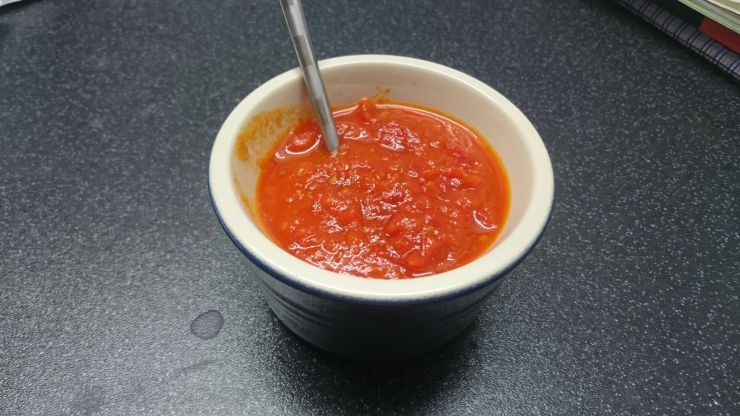
You can do a small smooth portion of Home Made Tomato Ketchup or Sauce. As we are just a couple in this household, I prefer to do it that way. Therefore it will be done for just the two of us and for one evening only.
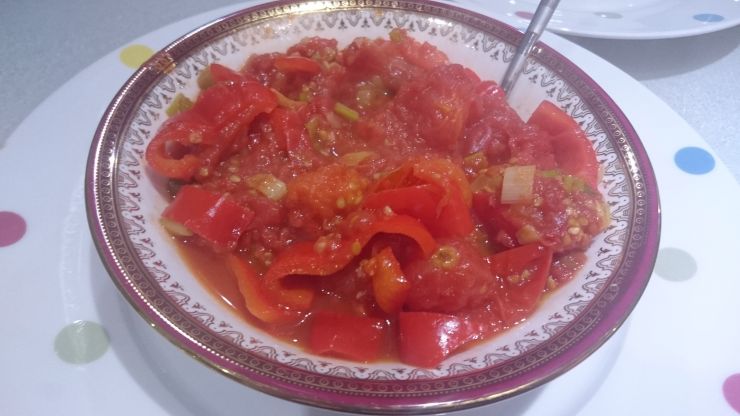
If you like the consistancy of a Tomato Sauce thicker then you can do so by not blending it but by chopping and mixing manually the Ingredients together. Above was a Tomato Sauce made also with the addition of Red Romesco Pepper, a Red Chilli, and Spring Onions. It does work very well served with Fish in general.
Tomato based sauces are versatile. They are also many of them which we will touch upon during this chapter. One thing is to be mentioned, which is that the qualities of Tomatoes can help a Sauce greatly because of their sweetness, their acidity which is not too sharp, their juiciness, after all what is a sauce if it has not that bit of a velvety give to it...? But also the Tomatoes do provide a vibrant colour to a Sauce.

As we do grow Tomatoes, sometimes we can end with a glut of them during some years. Therefore it is ideal to deal with Tomatoes by cooking and jarring them by making a nice Ketchup or Tomato Sauce to store.

It is also as cost effective as doing a small portion of a Tomato Sauce. You do get to keep the Fruits of your Garden and efforts for longer by preserving.
Speaking about the realm of Ketchups, you also do have Mushroom Ketchup which I usually do buy rather than make. I recommend to that effect Geo Watkins Mushroom Ketchup in bottles although you have others you can try. But same as the Tomato Ketchup you can Home make it. I would not lie when I say that it is rather tedious to make for I did it thrice. However the struggle is worth it.
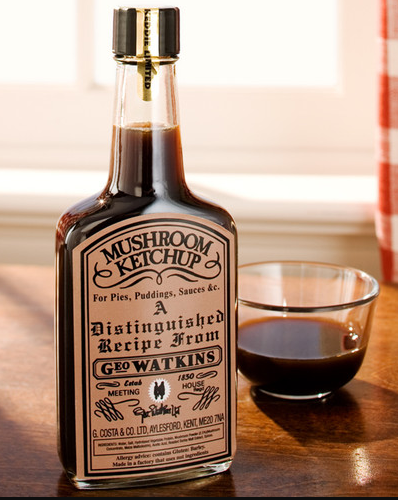
Geo Watkins Mushroom Ketchup. This is the one I do go for. I always have a bottle of it in my pantry.
But I would recommend one thing is to not forage for the Mushrooms unless you know them, or show them to an expert Chemist. If you do so, go foraging, then follow the advices of a good guide book upon them. There is a River Cottage Handbook upon Mushrooms which is the Number one of a serie of River Cottage Books (which was written by John Wright). I own five of those River Cottage Handbooks serie upon different subjects which are all interesting. It is about Gardening but also Foraging. They are very instructive.
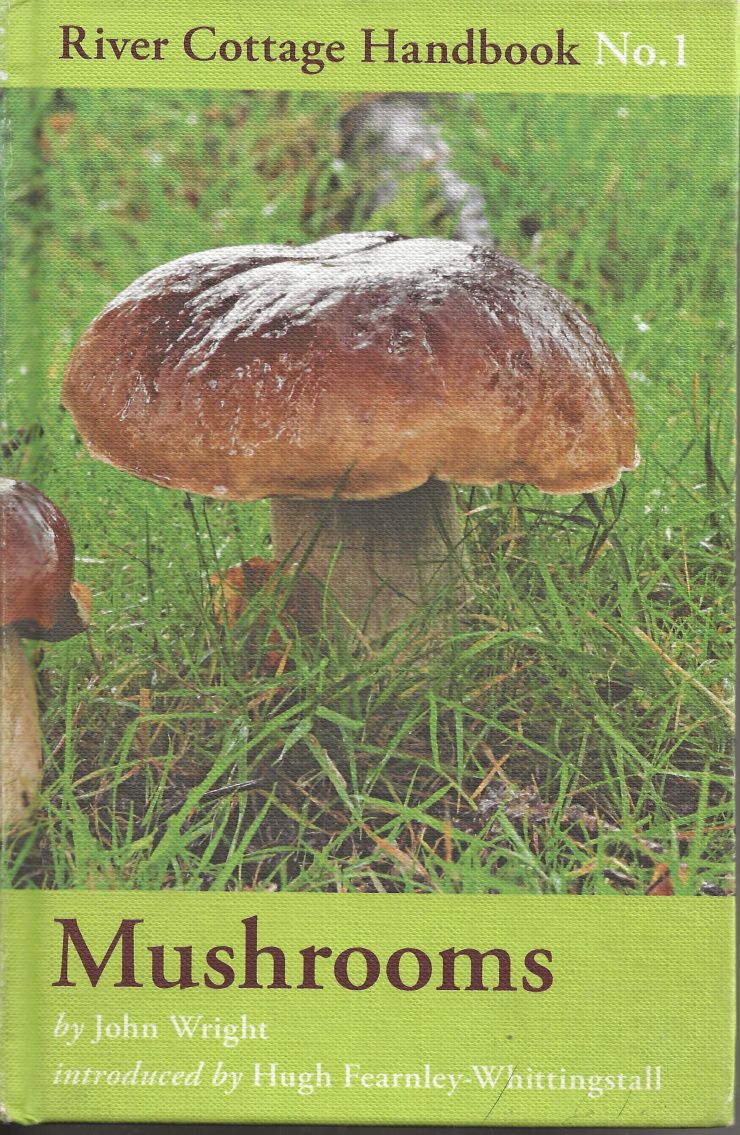
If you can get your hands on this guide book about Mushrooms, you will be on a positively good start. It also has a fair few pages at the end of it about how to keep Mushrooms, hence preserve them but also some Mushrooms Recipes. I particurlaly like the Mushroom Paté one, page 202. It is simply nice.
Another way of foraging for Mushrooms is to follow an expert doing so and learning from it by going in fields and forest with him or her. So you will know what to look down to or for and recognise the differences between Mushrooms with full practical advices. I feel like singing the MC Hammer song 'Don't touch this' when I am saying that. They will teach you what to pick and what to take but also what to leave behind (hence the poisonnous Mushrooms).
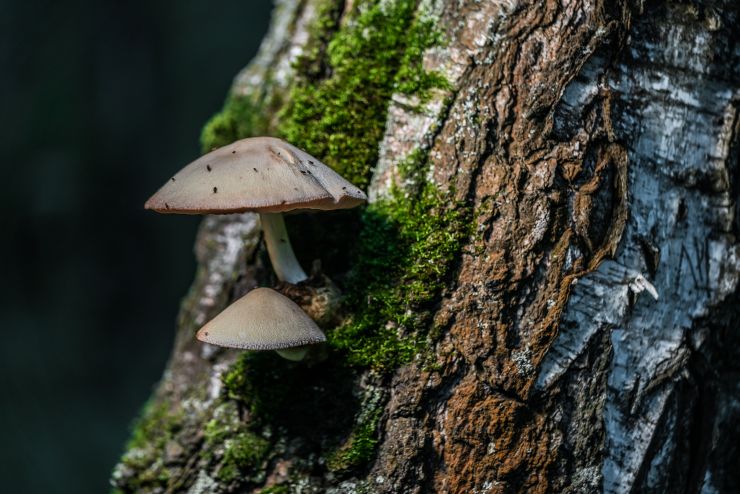
Foraging can be good in essence but you always need to know what you are doing but also what you are looking for. It is good to set out with a plan or part of a plan. Lets just say ' I am only looking for Ceps today' as an exemple. But it is always ever so tempting to pick whatever Mushrooms: One, you do think is a Chanterelle Mushroom which could be in fact a false Chanterelle that can make you very ill. So always be aware whilst foraging. I will recommend this website to help you out: https://www.wildfooduk.com/mushroom-guide/
There is also another way which is by growing your own edible Mushrooms. It is a rather interesting hobby to indulge upon. For what you can get from a plant or Mushrooms nursery will be safe to eat. It is a rather intricated thing to do but also, as I did do it, it was very educational as well. It is full of surprises: The Mushroom that grows funny or too big comes to mind...
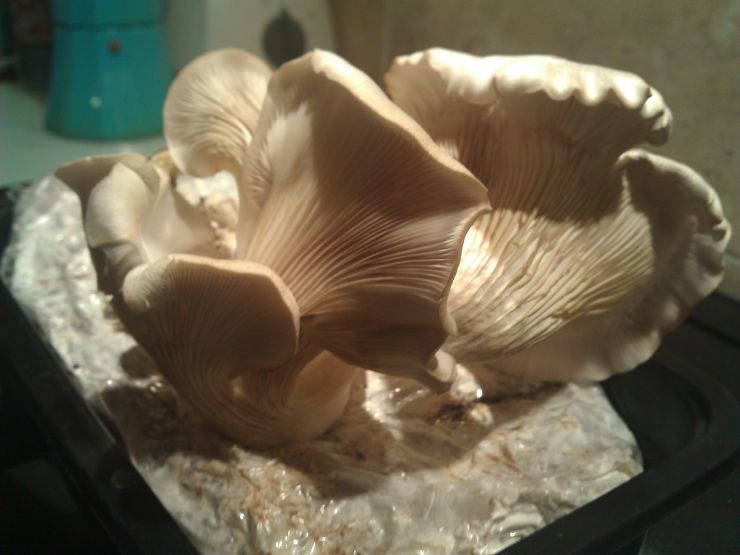
Growing Oyster Mushrooms. It was a learning curve for sure but a rewarding one. Those became part of a Stir Fry but also some of them enhanced a Chicken Ramen.
Now you can always use shop bought Mushrooms which will work perfectly well in a Mushroom Ketchup Sauce. A mixed ratio between fresh and dried Mushrooms is advised. Porcini Mushrooms, Portobello ones, Chestnut ones, Shiitake Mushrooms, Boletus, Ceps, all can be used, even wild Mushrooms but as I said before: with great caution: KNOW Your Mushrooms first.
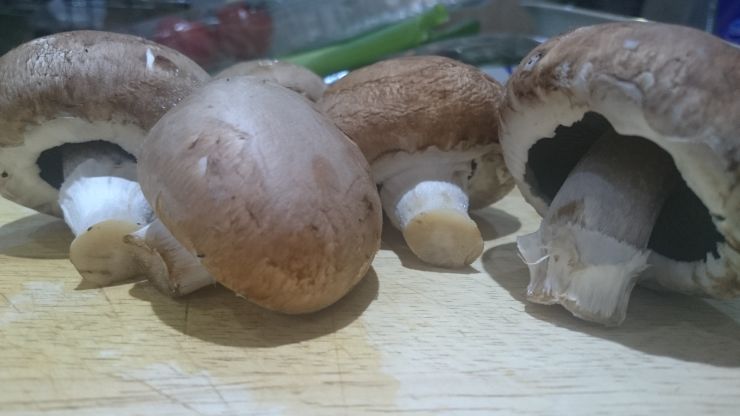
Chestnut Mushrooms are usually a safe bet to do a Mushroom Ketchup with. They are also widely available in Supermarkets.
Dried Mushrooms are easy to find and store then they can be revived within Water when needed. The Water will absorb the flavours of the dried Mushrooms which can be used for the Mushroom Ketchup. The recipes for Mushroom Ketchup dates from a very long time (1700's at least and originated from England, in the US it was around 1770's when it was first mentioned). Like Tomato Ketchup and Garum throughout time all the recipes for Mushroom Ketchup did evolve and vary. But it can involve Vinegar as well as Mushrooms, Lemon Juice, Salt and Pepper, Shallots, Garlic, Ginger, Mace, Cloves, Brown Sugar, Worcestershire Sauce, Port or Red Wine and Nutmeg. It has some spice to it in general which pairs well with Beef, Game, Venison, Poultry and some Patés and Terrines. It can enhance also Pastas, Risottos and Casseroles or Stews.
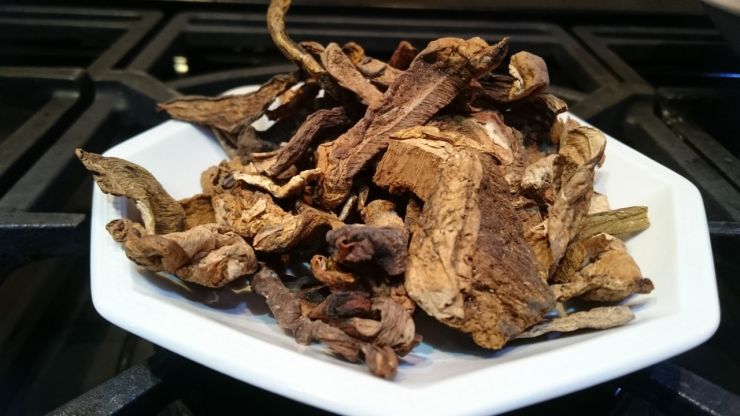
Dried Porcini Mushrooms. It is always good to have dried Mushrooms in the pantry. First they do keep for much longer. Second when we do rehydrate them the juice can give even more flavour to a Dish.
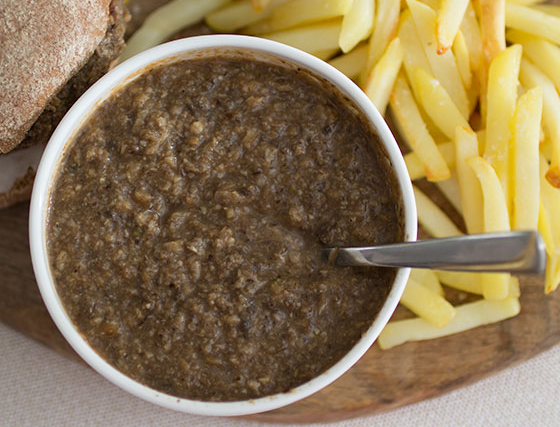
Mushroom Ketchup. It goes well within a Venison Burger.
Another Ketchup must be touched upon but also tried: the Banana Ketchup. Banana Ketchup was created in the Philippines during WW2 by Maria Orosa, due to the shortages of Tomatoes at that time. It has got the same use as Tomato Ketchup as a Sauce hence to be poured upon French Fries, Hot Dogs, Hamburgers, Chicken, Fish and more... It is usually yellow but also can be found to be dyed to become red then to ressemble more like Tomato Ketchup.
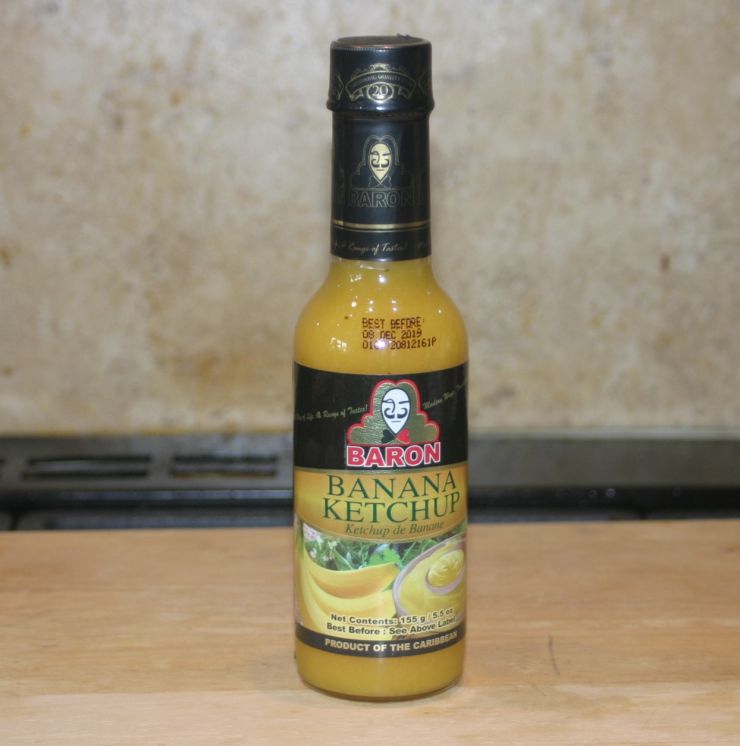
Banana Ketchup. Caribbean ones tend to be more yellow.
However the version done with Plantain, a large Banana grown in the West Indies, hence the Caribbean Islands but also Africa is slightly different. Plantain Ketchup is nonetheless sweet but also more savoury at the same time. It does have a vibe to it just like Banana Ketchup has but it will not be dyed normally. It will leave the natural course of the Plantain to be getting more brown. Also it does have the feel of Sainte Lucia and the Caribbean Islands with the added Golden Raisins soaked in Dark Rum added to it. The Spices used for its conception can also contain South American Chillies for a bit of a kick whilst the other Ingredients used are similar to other Ketchups.
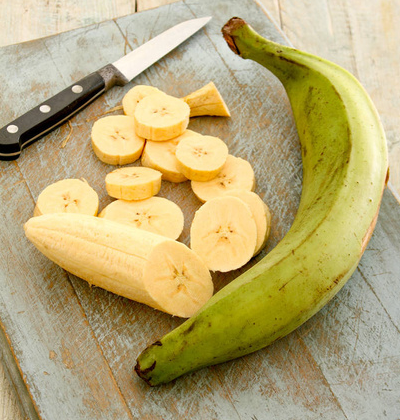
A Plantain is usually larger, greener and a tiny bit more bitter than a Banana hence it is perfect for savoury Dishes.
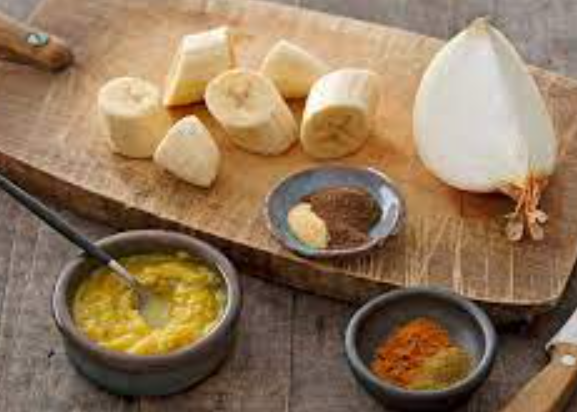
To give some vibes to a Plantain Ketchup apply to it the Spice Treatment.
To turn to another Sauce with a Spicy kick from the Caribbean, it is the Sauce from Levi Roots called the Reggae Reggae Sauce which is a Jerk BBQ Sauce. It came to fame with Levi Roots' appearence on Dragon's Den in 2007. It was truly a memorable TV moment.
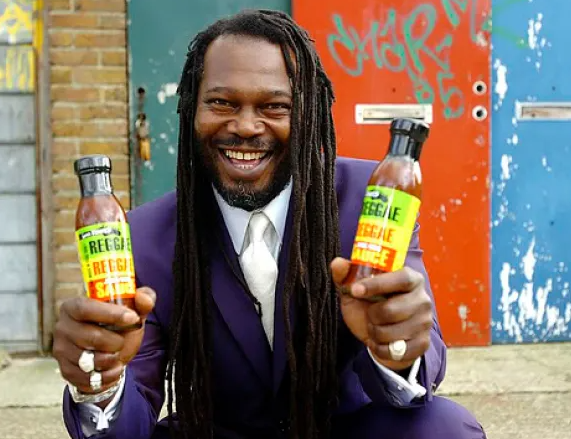
Levi Roots and his Reggae Reggae Sauce. His smile is irresistibly contagious.
But also this Sauce has a really nice kick to it. It is all about putting "Music into your Food". This, in effect, is the principle for a Sauce. For a good Sauce, when we think about it, does just that. This one does it with a little kick of Scotch Bonnet which is fruity and spicy hot as a Chilli Pepper.
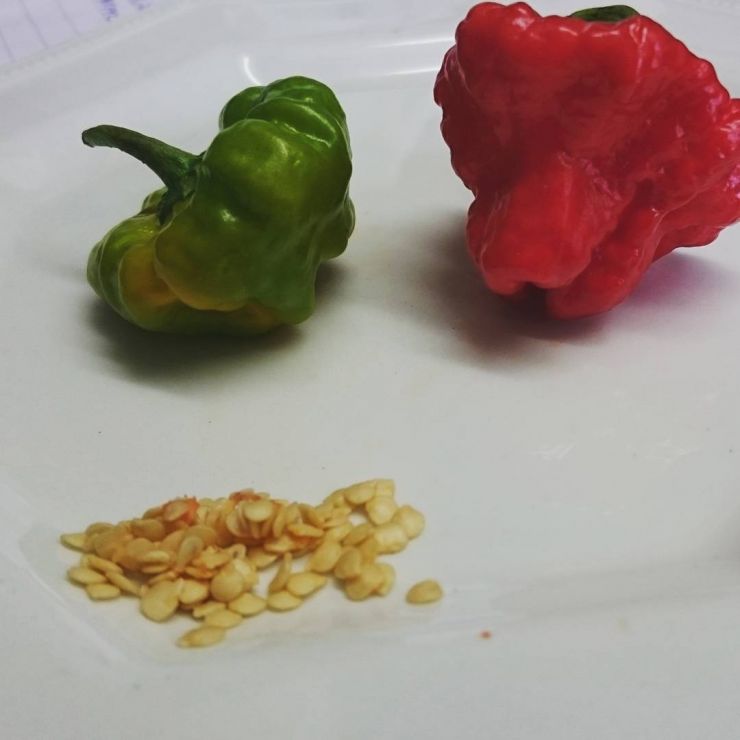
Scotch Bonnet Chilli Pepper. You can buy them fairly easily in shops. But you can grow them as well by keeping their seeds to plant them. They are very hot on the Scoville scale so be cautious when handling those seeds and Chillies. Don't rub your eyes afterwards for you will be in cheer pain. I do wear medical gloves whenever I have to deal with a Chilli by precaution. Because back in the days, I made the silly Chilli mistake of rubbing my eyes after chopping a Chilli. But on that occasion it was just Cayenne... But it was fierce, so fierce, I can't explain. So with a Scotch Bonnet one it will be much worst. Emergency tip is to wash your eyes straight away and to call for help.
BBQ Sauce is a classic. It dates back to the seventeenth century and the start of the North American Colonies. In fact it evolved from the traditionnal Hunter's Sauce also called Sauce Chasseur. Hence it has its origin from the old Continent. BBQ Sauce developped as a Sauce to deal with Meat in the great outdoors. It can be used as a marinade as much as a cooking Sauce or a condiment. Its base is usually made of Tomatoes, Onions, Vinegar, Sugar or Molasses, Mustard, ground Pepper, and Spices. From States to States from Area to Towns and Villages even from Family to Individuals to Businesses, the BBQ Sauce has many, many variations. Despite that or because of it, the BBQ Sauce is and remains a firm popular upon our tables.
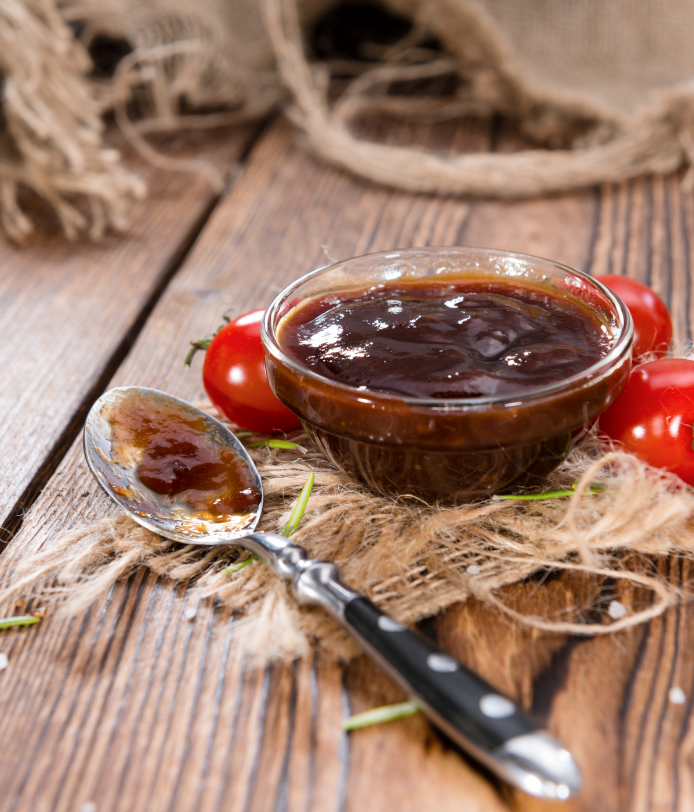
The typical colour of a BBQ Sauce is a rich brown.
BBQ Sauce can be rubbed upon Meat to give the Meat a smoky flavour. It can work as a Marinade to impart flavour to the Meat. During cooking the BBQ Sauce can be basted upon the Meat or brushed upon the Meat. Afterwards it can also be laddled upon the Meat or drizzled upon. At home we surely do a fair bit of BBQ Chicken Wings and Drumsticks but also BBQ Pork Ribs.
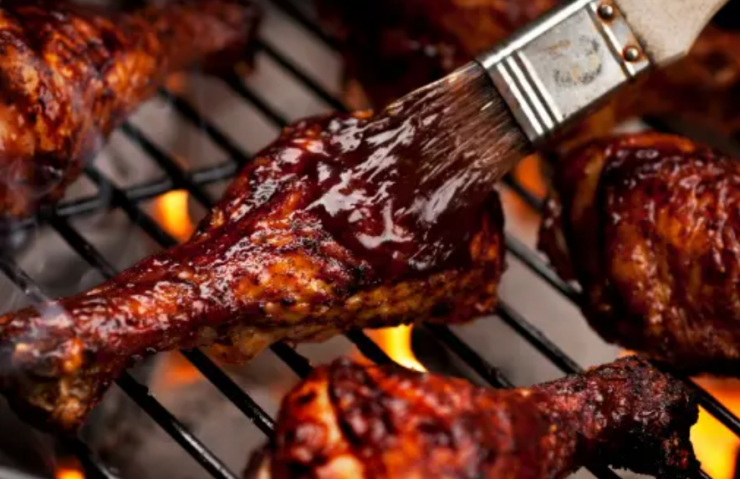
Applying an even coating of BBQ Sauce upon Chicken Drumsticks can be done with a brush for more accuracy. BBQ Chicken Drumsticks are a firm favourite in this household.
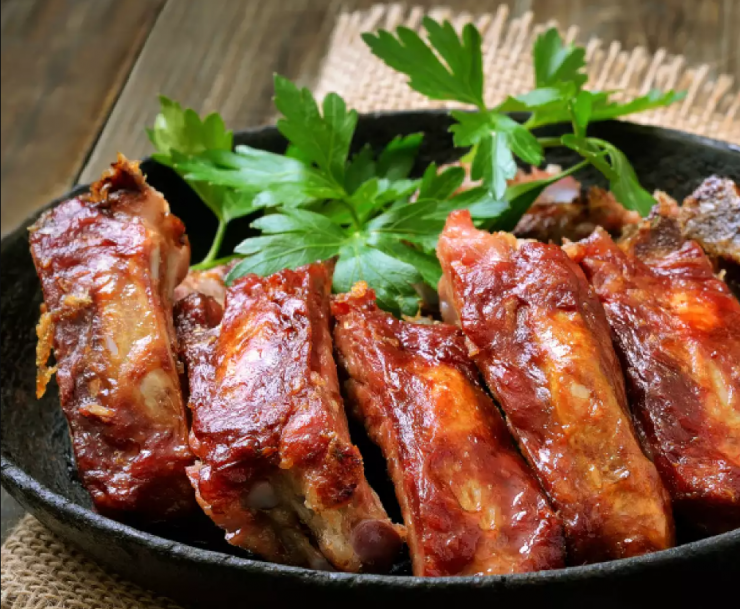
BBQ Pork Ribs is usualy one of our Saturday Dinner in front of the TV.
Another Sauce which is very popular since the Tang Dynasty in China is the Sweet and Sour Sauce. It can be made in different ways but it is most of the time greatly enjoyed. It was known by the Europeans since the Middle Ages and then it did spread throughout America. It goes ever so well with a lot of dishes involving Chicken, Pork or Prawns mainly.
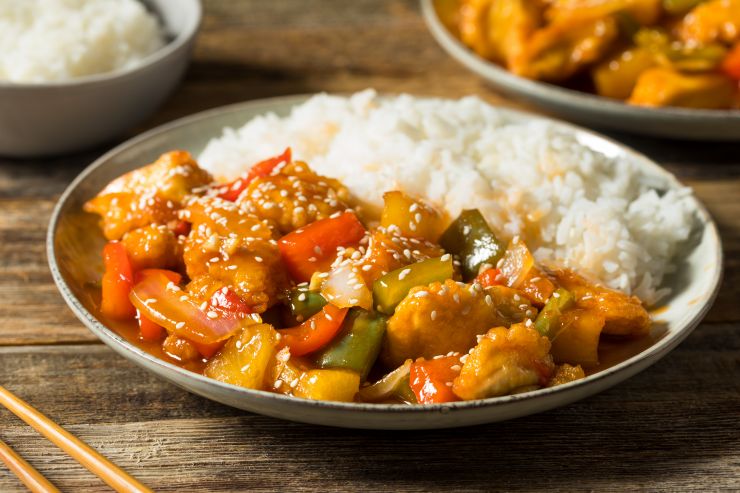
Sweet and Sour Chicken with Rice.
Stir Fried Veg and Fruit in essence is a great combination for this Sauce to be enjoyable. It is a balance between a little soureness and a little sweetness which is key in a Sweet and Sour Sauce but it also gives it texture. One of my first experience of the sauce was when I was fairly young when my Mum treated me to a meal at a Chinese Restaurant in Cherbourg ( I did pass my Brevet des Colleges with flying colours). It was a one to one with Mum so it was kind of a big deal but also there was not a lot of Chinese Restaurants in Cherbourg. It was a bit of a novelty to be honest. I had the Sesame Prawn Toasts, some crispy Sea Weeds, Tempura Prawns, Wonton Soup, Sweet and Sour Chicken with Jasmine Rice and Pineapple Fritters for the end. Let us just say that I was a very happy girl that day... To this day I still enjoy Chinese Cuisine, mainly as take away because I can't go out a lot any longer due to mobility issues.
One of my drawings for the Chinese New Year, 2022, the year of the Tiger, I gave it to "Panda Cuisine" because they did help me in a very good way with all the take away I bought from them when I was unable to stand up to cook. I was able to eat because of them while I was teaching my Man to cook for him and I. (Which was a challenge... and still is one.)
Like every Sauces mentioned above the Sweet and Sour one has multiple variations. Most involve Rice Vinegar, Soy Sauce, Ginger, Cloves, Honey, a Tomato base Sauce of some sort which could be even Ketchup and Worceshire Sauce. It is often done with chopped Sweet Green Bell Peppers, Onions and Pineapple. Carrots, Wood Ear Mushrooms, Bamboo Shoots, even Chilli Peppers, can be also seen and used in a Sweet and Sour Sauce. But it is all done by the interpretation of the Cook who does it but also sometimes of his/her Country of origin or even the regional area.
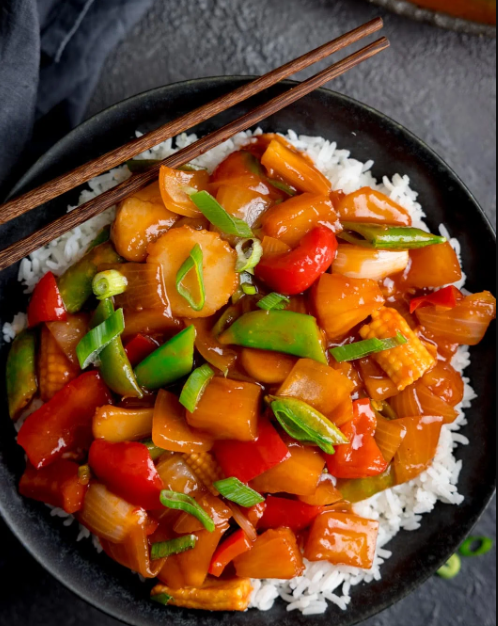
Veg Sweet and Sour Jasmine Rice. Packed full of Veg: Babycorn, Edamame Beans, Spring Onions, Onions, Pineapple, Sweet Red Bell Peppers and Yellow one, with sliced Ginger.
Another East Asian Sauce/Paste, which is popular, that is a salty number, is the Black Bean Sauce also called Douchi. It is made from fermented Black Beans. It dates from a very long time because jars of it were found in tombs dating from more than 100 BC. Dare I say that my Man loves its Beef in Black Bean Sauce. He always orders it when we have a Chinese take away. We also always keep a jar of it in the pantry.
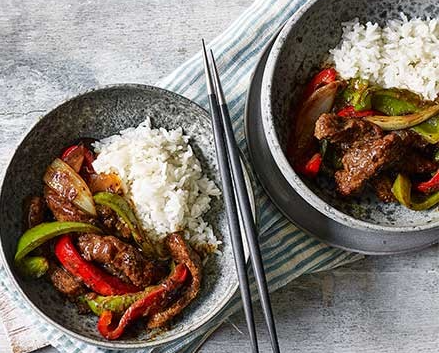
Beef with Black Bean Sauce and Jasmine Rice.
The taste of fermented Black Bean is rather bitter sweet and salty. It is very pleasing. The Black Bean Sauce is versatile. It can work really well with Fish, Beef and Vegetables and of course with Rice and Noodles. Therefore a lot of combinations are there for it to be used.
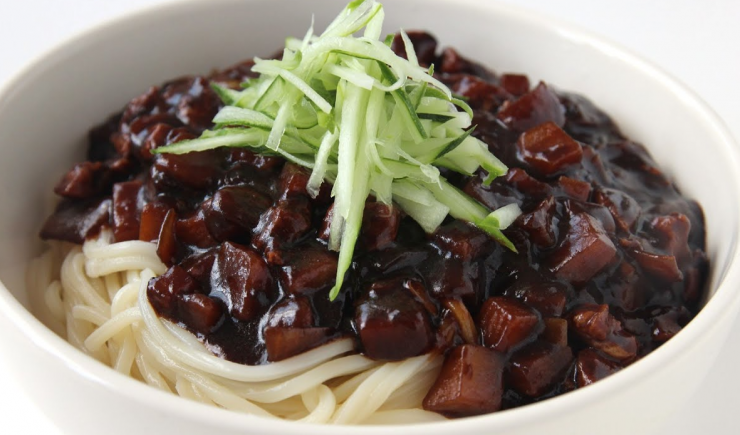
Black Bean Sauced Noodles with diced Daikon, Zucchini, diced Potatoes, chopped Onions and Cucumber to garnish the Dish. It is a rather morish Veg Meal. But you can turn it in a more meaty Dish by adding Pork Belly to it like in Korea.
To remain in the world of Beans there is the world famous Soy Sauce. It is made with Soybeans this time which have been fermented. Therefore it gives this Sauce/Condiment a lovely saltiness to it. Soy Sauce is dated to be more than two thousands years old. It is also called Soya Sauce. There is also varients to it, which are mainly classified as the Dark Soy Sauce and the Light Soy Sauce. The difference is that the Dark Soy Sauce is mainly used during cooking to give a depth of flavour to Food while the light one is mainly used afterward when the Food is served hence more as a Condiment. Soy Sauce is used a little like Salt to season a Dish.
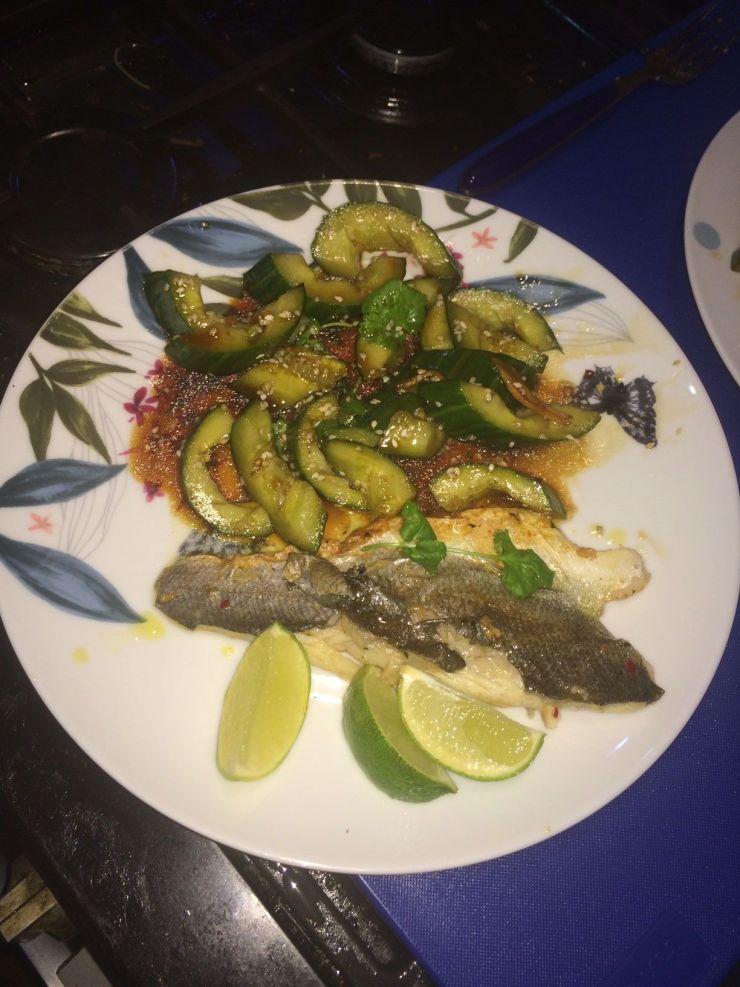
Braised Sea Bass Fillets with Cucumber, and Soy Sauce. Served with Limes and the addition of Sesame Seeds. I do tend to favour Dark Soy Sauce over the Light Soy Sauce for some reason or another.
One other Sauce being kept in my pantry or fridge at all time is the Tartare Sauce. It originated from France but is based upon the Mayonnaise which is claimed by Spain and Southern France. What is important is that we have the Tartare Sauce which is working so well with Fish but also Beef. Basicaly a Tartare Sauce is kind of a beefed up Mayonnaise or Aioli. It can inclued Gherkins, most certainly Capers, but also Tarragon, Dill, Parsley, Chives and Lemon Juice. Some do have also the optional chopped hard boiled Egg, Olives and Dijon Mustard. The tartiness of the Tartare Sauce makes it a bit of a winner on the palate or the tastebuds.
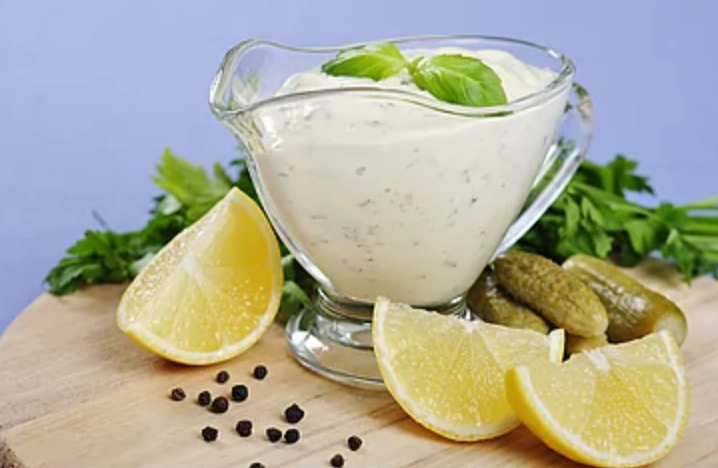
What you do look for in a Tartare Sauce is a specific sharpness and tang about it.
As for the name Tartare, the origins of it comes from the Tatars. It is an entire ethnic group which blended throughout the Spice road from Mongolia to Turkey. But it comes originally from Mongolia right back in the days. The legend speaks of the Tatars keeping their steak or piece of meat raw under their saddles as they did ride to invade other countries. It was tenderising it. This story was spread by Jean de Joinville in the thirteenth century. Hence with that knowledge or belief what did spread was the fact that we could eat raw meat especially Beef. There the Steak Tartare was born as per say. The Sauce came later to accompany the Steak... Everything is up in the air for we are tracking the track of a track which time is belonging to the past.
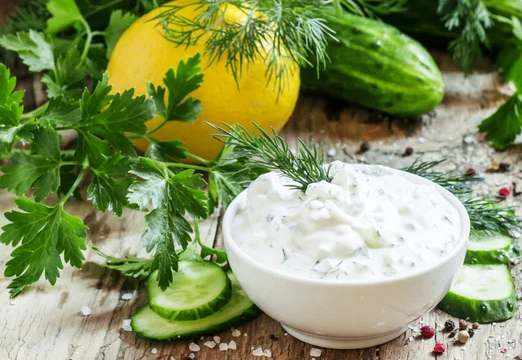
Tartare Sauce: the essential ingredients are Mayonnaise, Gherkins, Capers, Lemon Juice, Dill, Parsley, and crushed Peppercorns and a little Salt. The optional ones are: Tarragon which is fragant and add flavour to the Sauce but is quite hard to get in the UK, Mustard which gives a good little kick in the background (Dijon Mustard by choice), hard boiled Eggs are a possible for texture, and Olives for an extra bit of saltiness either Black or Green.
A Sauce which I do love a lot is the Béarnaise Sauce. It is fairly similar to the Tartare Sauce. However its history is a little more recent for it was said to be created by the Chef Collinet in 1836. It comes from Saint Germain en Laye, the Pavillon Henri the Fourth. This was a royal property where the Sun King was born. While King Henri IV was from Béarn, south west of France. Hence the Sauce was called the Béarnaise.
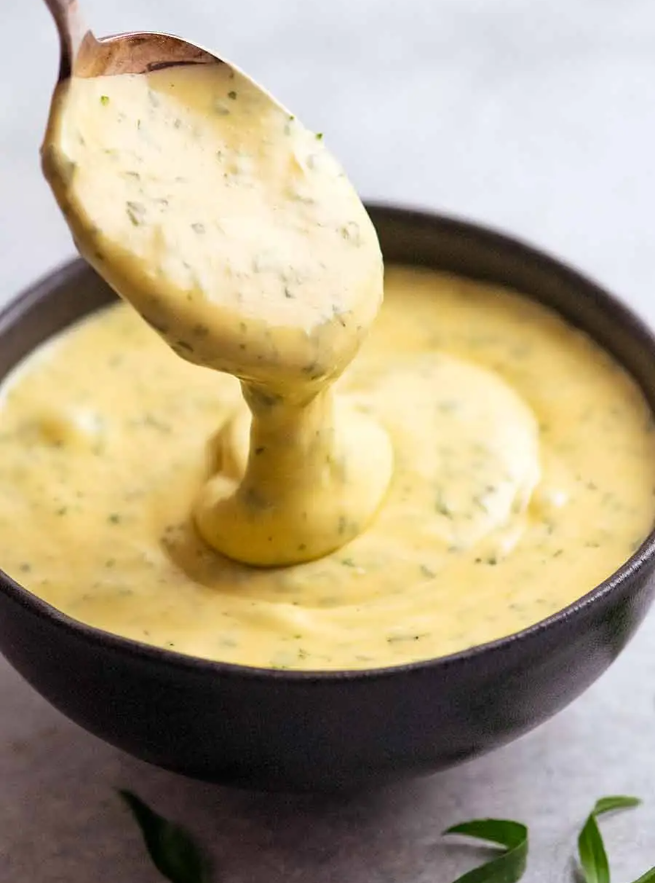
The Béarnaise is done with White Wine Vinegar, White Wine, Butter and Egg Yolks. It also contains Herbs like Tarragon, Chervil and Parsley. Shallots and Black Peppercorn gives it a punchy twist. Compared to a Tartare Sauce it has a colour which is more yellow due to the eggs.
It is said that the Béarnaise Sauce création was a happy mistake. It is also believed that it is simply a variation upon a Hollandaise Sauce, the Hollandaise being the mother Sauce or the most ancient sauce out of the two. Anyhow the Béarnaise Sauce is very popular for working well with Beef and also Fish, like Salmon Steak or even Smoked Salmon.
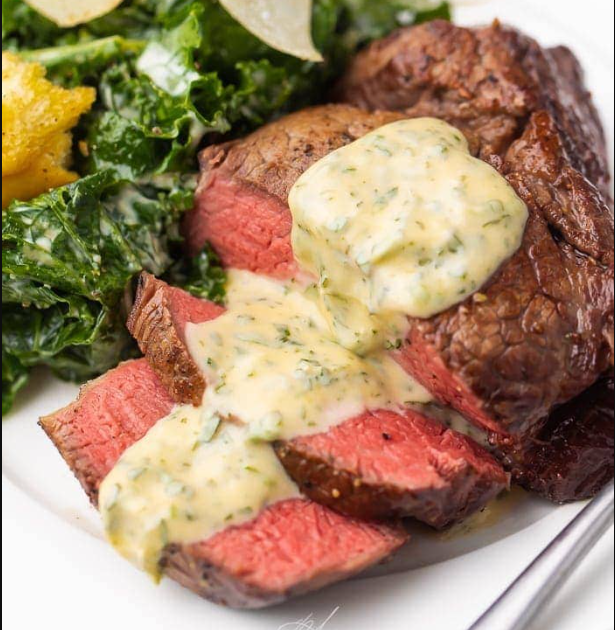
Beef served with a Sauce Béarnaise.
Escoffier established in his opinion nine mother Sauces. One of which is the Hollandaise Sauce which is in its turn based upon the Mayonnaise Sauce. The Hollandaise Sauce is made with Butter, Egg Yolks and Lemon Juice. The Lemon Juice can be replaced by White Wine Vinegar. Everything needs to be reduced but not curddled. It should also be seasoned with either White Pepper or Cayenne Pepper. Chopped Chives may be included as much for the taste as to be a garnish.
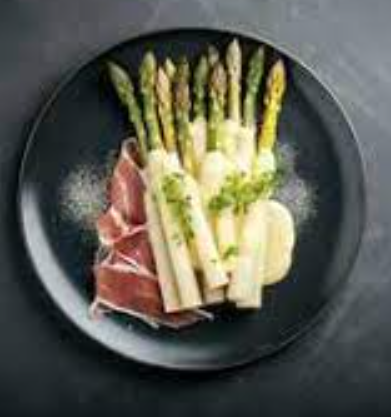
Hollandaise Sauce was reported since 1651 as a fragrant Sauce to put over Asparagus which is something we still do today. The recipe, then at that time, had a pinch of Nutmeg within it.
Hollandaise Sauce carried many various names such as the Dutch Sauce or the German Sauce, but also the Isigny Sauce. History shows that the Hugenots, Protestants mainly from Béarn or the Gascogne, hence South West of France went to seek protection in Holland which was mainly Protestant. It was a matter to escape the war of religions which was rife in France during the 16th century, especially during the dreadful St Bartholomew's day (24/08/1572) which ended in a massacre. One important man which managed to escape the massacre, who studied in Normandy (Lisieux, near Isigny famous for its Butter and Cream) was Philippe de Mornay, seigneur du Plessis Marly. He created the Béchamel Sauce, the Mornay Sauce, the Hollandaise, The Chasseur Sauce (Hunter's Sauce). Hence he is the man at the root of many Sauces we still enjoy today and that also evolved into Mayonnaise and BBQ Sauce.

Smoked Salmon and Egg Benedict covered with Hollandaise Sauce and Chives. This makes a very nice and lush Breakfast or Brunch.
There is also from South Western France and North of Spain, the Aioli. The spelling differs a lot from areas to regions but the meaning deep down is the same: it is a combination of Olive Oil and 'Ail' which is simply Garlic. It is also called in our modern days the Garlic Mayo. It is simply a Garlicky Mayonnaise. The Sauce is made with Egg Yolk as a base, Olive Oil, Lemon Juice, Garlic, seasoning (Salt and Pepper) and with a little Dijon Mustard. Like the spelling of Aioli, the Ingredients can differ almost from cottage to cottage but Olive Oil and Garlic are the ones to give its peculiar taste mainly.
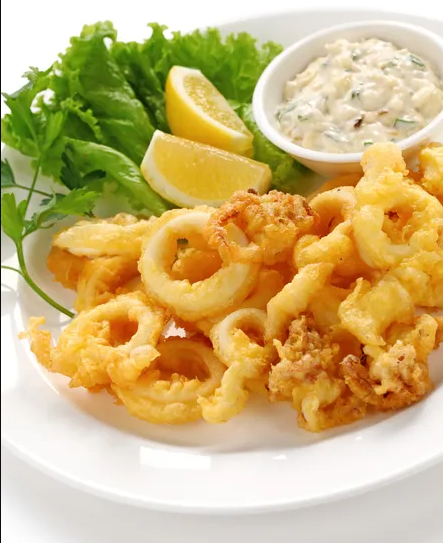
Fried Calamari rings with a herby Aioli Sauce. Aioli goes really well with all kind of Fish, oily ones or white flesh ones. But this Sauce can also go with white Meat like Chicken or Pork. It can be drizzled upon a Salad to create a great taste and effect.
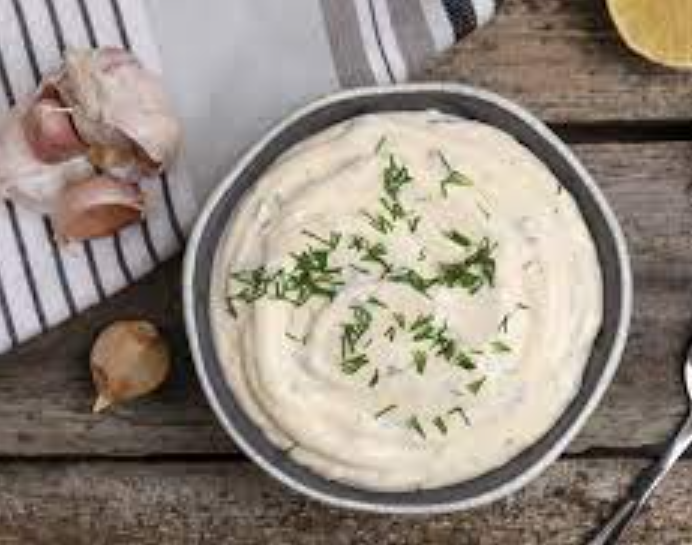
Aioli makes a perfect dipping Sauce for Fried Whitebaits.
One main Sauce that we almost all know by heart is the good old Mayonnaise. If its mention is fairly recent, as per say, in the 1750's, it does date from earlier than that for its technique dates from prior, but a name for it was registered or adopted later. There is also contentions to this day upon its origins, either Mallorca, Spain or France. At its base there is again Egg Yolks, Oil and Vinegar. Therefore it is an emulsion. Of course it can have other Ingredients as well.
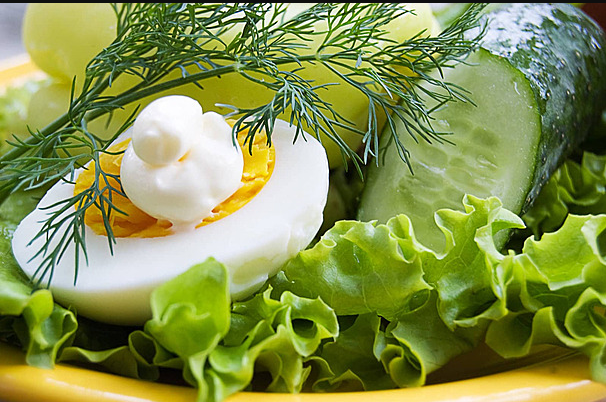
Eggs Mayonnaise, a simple pleasing Snack or Starter. It consists of hard boiled Eggs and a good dollop of Mayo upon them. Then the way to serve them is up to you. Leaves of a Butter Lettuce, slices of Cucumber, Dill, White Grapes to accompany them can be a good idea.
I have good memories of simple dishes created with Mayonnaise as a binder or a layer. Chopped hard boiled Eggs on Toast was one of them when I was a student. When you write your essays for your university degree and then did forget that you haven't eaten yet in the middle of the night, sometimes salvation can be at hand with just Bread, Eggs and Mayonnaise. You can always jazz up that snack if you have something else at hand: May be by chopping a Tomato or a Cucumber and adding a pinch of Cayenne Pepper... The good old days.
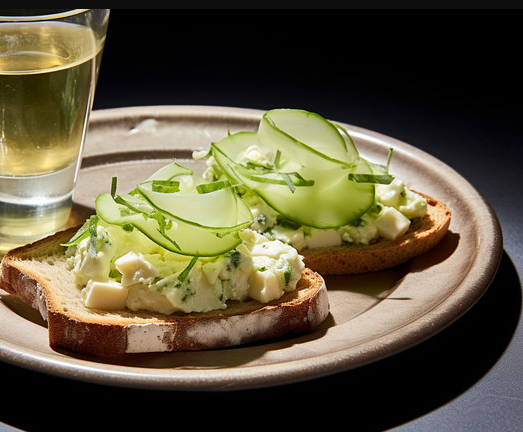
Chopped Hard boiled Eggs and Mayo on Toast with Cucumber and Chives. Sometimes simple things can make you smile and sing.
There is a Salad which I love which is the Piémontaise Salad. You will find the recipe for it on this website. It does use Mayonnaise which does coat the other Ingredients like a velvety glove. Usually you use diced Baby Potatoes, Eggs, Ham, Tomatoes, Parsley, Dill, Gherkins, and if you do like them Capers. As per say, if different, a Piémontaise is diced just like a Macédoine, but it will not have Fruits in it, however it may have Peas on occasion.
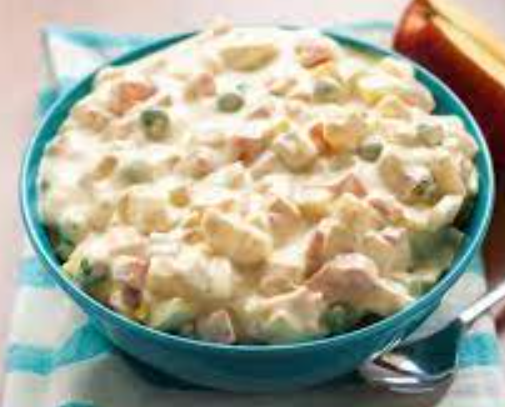
A diced cold Salad covered with Mayonnaise is a bliss on hot Summer days.
Then there is the Marie Rose Sauce, which is also called the Cocktail Sauce or a Seafood Sauce. But variations of it can be the Fry Sauce and the Thousand Islands Sauce. The mother Sauce here is the Mayonnaise which is mixed with Tomatoes. It could be Ketchup or Tomato Purée. Another important thing to add is a little heat on the palate, like some Worcestershire Sauce, some Lemon Juice for acidity, a little pinch of Black Pepper or Cayenne Pepper and the optional pinch of Smoked Paprika. This Sauce goes well with Seafood such as Prawns.
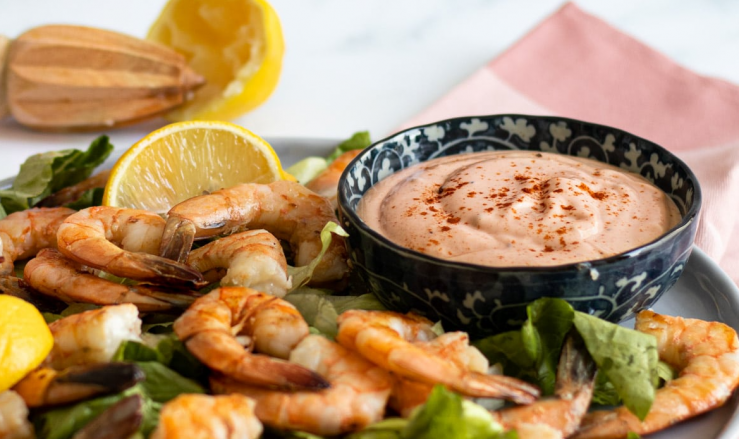
The Marie Rose Sauce can be called by many names but the principal of it usually relates to the Sea. Hence it is one which is good to use for Seafood. The Marie Rose was a ship which did sink in the Solent during Henry the eigth's time. It is now in a museum. For the thousand Islands Sauce, there the explanation to the name is still linked to the Sea but also Spices being involved.
Fanny Cradock, a British Cook, did popularise the Marie Rose Sauce in the 1960's. It became almost an instant hit. The fashion was passed on and on; usually in the form of the Prawn Cocktail. But that type of Sauce existed prior to 1967. As a kid of the seventies and eighties, I remember the Prawn Cocktail with foundness. It is one of my favourite Starters. When I see it on the Menu I usually order it. I did also make it for myself but I stopped, one reason is that my Partner doesn't like Seafood so it does make it awkward but the other reason is with the deregulation Boris Johnson inflicted to the UK, the water, may it be sea or rivers are now poluted. If the new order fit the industrialists, it doesn't sit well with the population which is becoming more sick hence ends up in NHS hospitals which are underfounded by the Tories: The dire straight...
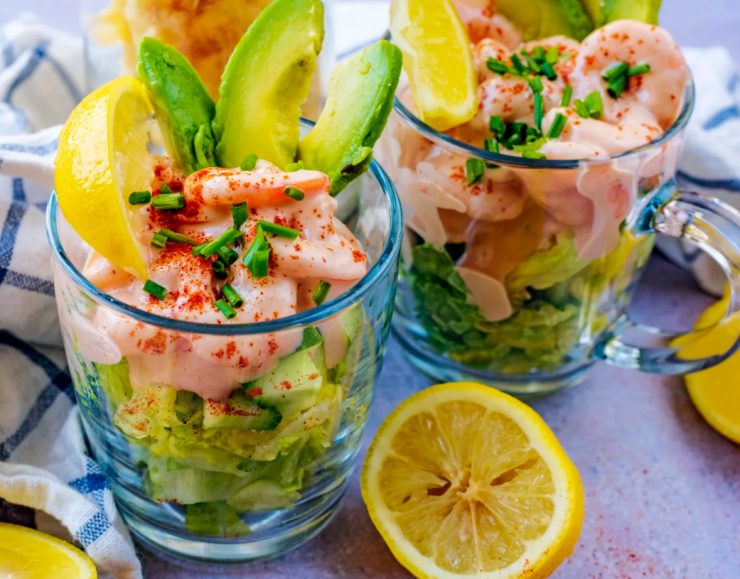
Prawns/Seafood Cocktails are relatively easy to do. Their conceptions are giving almost free scope to your imagination. The main Ingredient of course is Seafood: Prawns, Lobster tails, Crayfish, Shrimps, Oysters, Cockles, Calamari, Crab or even Octopus. The choice is yours as per say. It just needs layers of texture, like a crispy Salad base, a buttery Avocado, a fresh Cucumber, the acidity of Lemon or Lime Juice, the little sparks of Herbs to lit up the palate, like chopped Chives, Chervil or Dill... But the key element which bind everything together is the Sauce: Softly Spicy like a Velvet glove bringing all the elements together.
Another Sauce of my Childhood which I did enjoy was the one called the Sauce Mousquetaire. Again there are multiple variations/interpretations of it. It can be done in three stages almost. One would be to do a Mayonnaise base. Another would be to do a White or Red Wine reduction including chopped Shallots, a Wine Vinegar either Red or White, Oil (Rapeseed or Vegetable), Stock (Beef or Veal), Dijon Mustard, Salt and Black (or Cayenne) Pepper, chopped Piment of Espelette. Then it would be to slowly insert and bind the two together carefully to not get anything wrong. This Sauce has a little kick to it which is most welcomed.
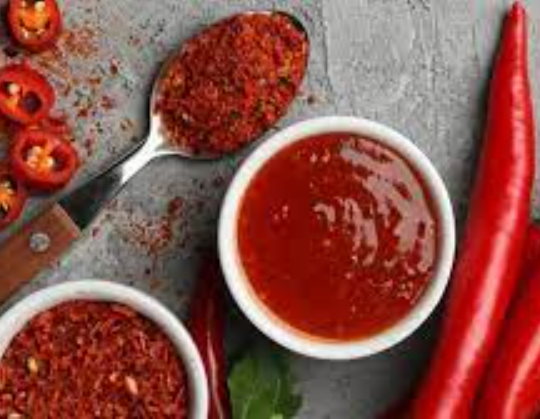
The Stock use for the Sauce Mousquetaire comes from the Juice of the cooked Meat to be served. But it is not a rule set in gold for to serve Chicken with a Sauce Mousquetaire, you can do so with the more traditional Veal Stock. The Mousquetaire Sauce goes well with cold Meat Dishes. This Sauce is a playing field like many Sauces, a balance, between different Ingredients. Tomatoes may be added but the Spices must be there but also the meatiness from the Stock. However Mayo is a big part of it and Shallots as well.
If we return to the world of Tomato Sauces, a simple one to do is the Sauce Vierge. It consists of Tomatoes, very finely chopped, preferrably without the seeds. The Tomatoes have an inherent acidity to them, however Lemon Juice is added to give the strengh to the Sauce to infuse the Herbs added to it. Basil is the main Herb here but nothing stops you to make that Sauce sing to the rooftops packed with more Herbs, like: Chive, Chervil, Parsley, Oregano. To pack more punch and to add more flavour finely chopped Garlic is also involved. The optional can be Coriander Seeds, Chilli Flakes, or a chopped Chilli like an Espelette Chilli Pepper. It will add spice to the mix which is combined by Olive Oil. To add saltiness you can think along the line of putting Capers, or Anchovies, or Olives or Shrimps... Food for thought.
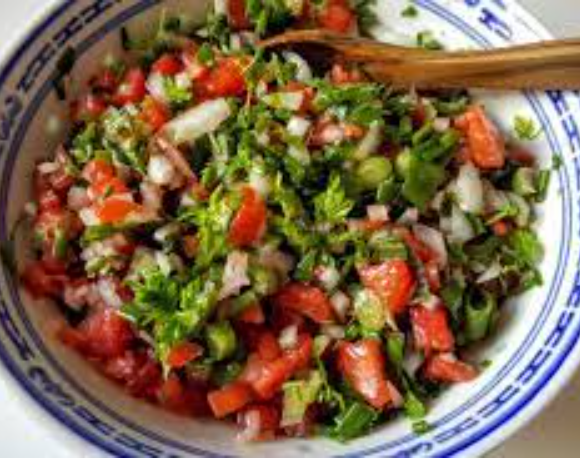
For a Sauce Vierge it is nice to see every single Ingredient even if they are diced thinly. A charm of that Sauce is that it is mixed but not blended. A gentle stir of a wooden spoon just suffices.
The entire process can work by infusing or by gentle maceration. Heat does not need to be applied for the acidity agents (Tomato and Lemon) will do their job when slowly breaking down (tenderising almost) the molecular system of the Herbs. It is almost like cooking without the heat. Add the Seasoning to get the result you want. As I said before you can adapt it to make it yours, a recipe has always interpretations and versions. A recipe is like DNA, it does stay alive with time, places and individuals. It has a life of its own as soon as it is being created. Later on, a recipe may have an alteration in 'allele 21' in its genetic curriculum (keeping up the DNA comparison) and you may have/ added chopped Shallots to a Sauce Vierge which may worked fantasticly well.
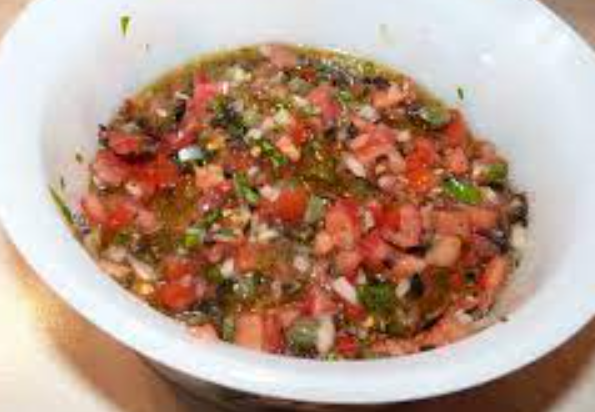
In terms of ratios, my preference is to have one part liquid elements to three parts for the Tomatoes, Herbs and else. It dances together on the palate a bit like a Salsa. Always crucial is to taste test your Sauce to have the perfect balance before you serve it.
The Sauce Vierge is a Sauce perfect to use with the produce of the Sea: From Mussels, to Scallops, passing by Dover Sole, and John Dory (White Fish in general and Seafood). The trick is to not make the Sauce Vierge too greasy with Virgin Olive Oil but to balance it just right with Lemon Juice. It is what we can call a balancing act. The Sauce Vierge was created in 1976 by Michel Guérard.
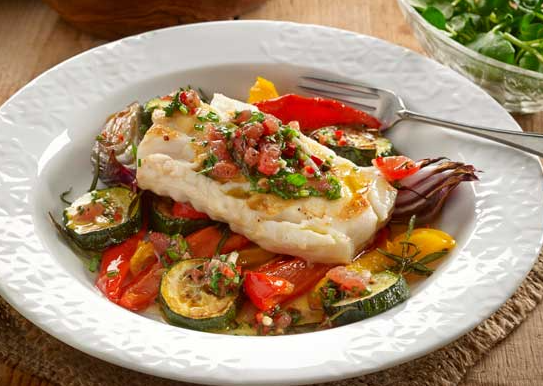
Roasted Cod with roasted Med Vegetables served with Sauce Vierge.
When we do think about it, the Sauce Vierge shares similitudes with a Tomato Salsa, or Salsa Sauce or the Pico de Gallo. The Salsa Sauce is a fresh Sauce, hence the Ingredients are usually not cooked. The acidity of the Tomatoes and the added Lemon or Lime Juice cook partly the other elements. Tomatoes are of course the main Ingredient but they are jazzed up with usually Onions in a Salsa. The choice of the Onions have importance here, in terms of sweetness, pugency and colour. A white Onion will give to the Salsa the colours of the Mexican Flag but also a little Garlic. As for the green, it is provided by Cilantro also called Coriander but Green Chillies as well. It could be Serrano, Jalapenos or Habaneros Chilli Peppers. Other optional green Ingredients can be Avocadoes, Cucumbers, Cucamelon and Tomatilloes. With a dash of Olive Oil or Sunflower Oil, and may be some seasoning you are good to go with the Tomato Salsa.
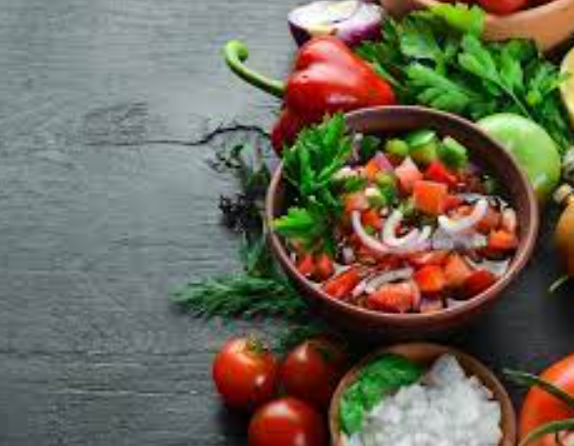
A Tomato Salsa is great with Fish, but also grilled or BBQed Meat. It can also help to fill a Taco or a Tortilla to give them a nice vibe.
Tomato based Sauces have a tendency to be similar but just a nudge of differences between them always pull them apart: It might be just by adding that other Ingredient. But it might also be the large game of texture they can cover. For Pico de Gallo, 'Pico' means pieces, cut pieces, chopped, this is just an exemple. There are many ways to give some texture to a Sauce as well as flavours. If we take for exemple another Tomato based Sauce, the Romesco Sauce, Bread or Flour give it a pleasing consistency. The Bread in that instance works like a thickening agent. Along with Tomatoes go the Sweet Bell Pepper or the Spicy Pepper (Chilli) of your choice (Capsicum Annuum is the name which encompass both). As we mentioned texture, for the Romesco Sauce, an essential Ingredient is Nuts, toasted Nuts: it could be Pine Nuts, Hazelnuts or Almonds. There lays the body crunch to this Sauce.
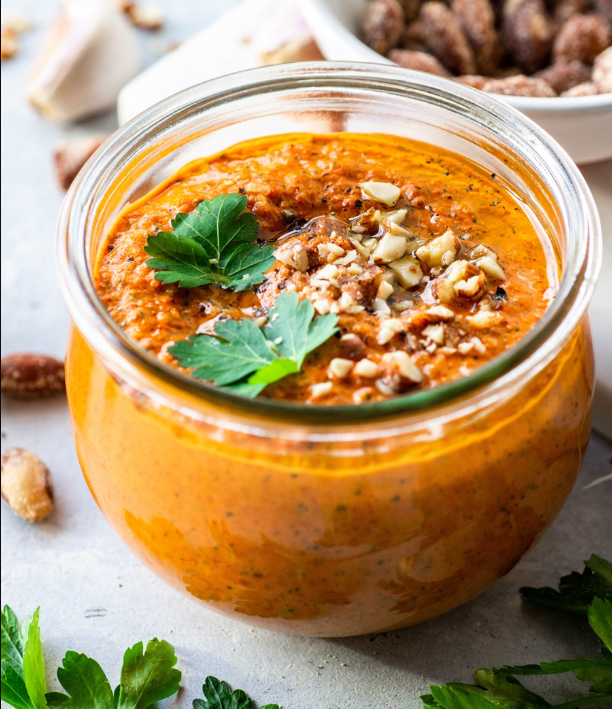
Romesco Sauce's origins is from Spain. As well as Hazelnuts and Stale Bread or Breadcrumbs, the other Ingredients are Olive Oil (or Sunflower Oil), Sherry Vinegar (or Red Wine Vinegar), Garlic, Shallots ( or Onions), and Herbs like Parsley, Chervil, Fennel fronts or even Mint. It is a Sauce full of texture but also full of taste. Like most Tomato Sauces, it does go well with Fish but also Vegetables, White Meat and Lamb. This Sauce makes the most of produces you do get in Autumn.
Another Sauce which does classify as a base Sauce is the Sauce Espagnole which also has Tomatoes. It does start with a Roux Brun which is simply Butter and Flour cooked together until the colour is brown almost a caramelised one. (they are also Roux Blanc, pale, made to prepare Béchamel Sauce, and Roux Blond which is rendered in between a Roux Blanc and a Roux Brun hence it will be more yellow). But it also involves a Demi-Glace or Fond Brun. Those are the Juices/ Broth you do collect and reduce from Meat like Beef or Veal. It can also be called Bouillion or Court Bouillion. It is dense and full of meaty flavour. Other elements in the Sauce Espagnole consist of a mix of Vegetables called Mirepoix. It is often made with diced Onions, Carrots and Celery. This mix can also be called the Holly Trinity. Again it does vary for nothing is set in stones with recipes. They do travel with individuals. They do not have frontiers. They have a beating heart like humans. They breathe and live their time and outdo their space.
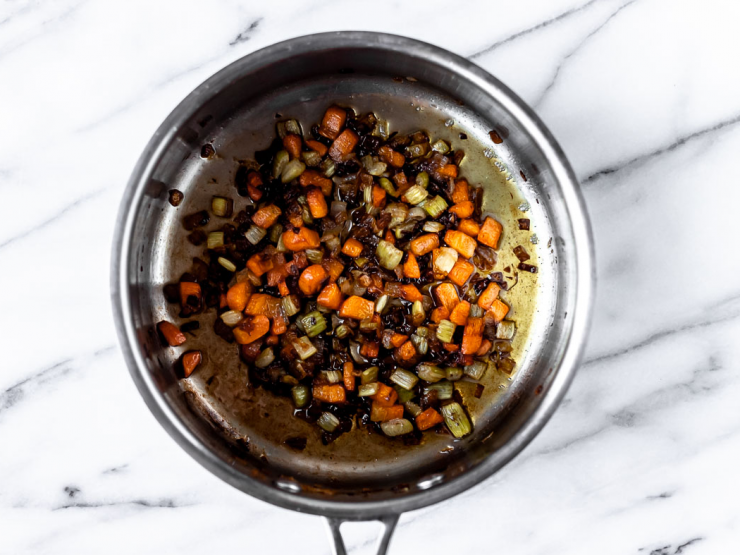
The Base of the Sauce: diced and rendered down Veg (Onions, Carrots, Celery) to give depth to a Sauce Espagnole.
The Sauce Espagnole is a hearty classic at its base. But it is also aromatic for Herbs like Bay Leaves and Thyme which do impart flavour to it. Not to mention that the woody taste of the Sauce Espagnole also comes from Mushrooms. This Sauce can be as you like it either chunky or blended to be rather smooth. It does ressemble a Sauce Chasseur also known as a Hunter's Sauce in spirit. Many sauces have their origins from North west Spain and South west France: The Béarn, Catalonia, Navarre, Gascony areas... It is all across the Pyrénées Mountain range. For the Sauce Espagnole, it is usually rather thick and dark brown in colour full of depth in flavour.
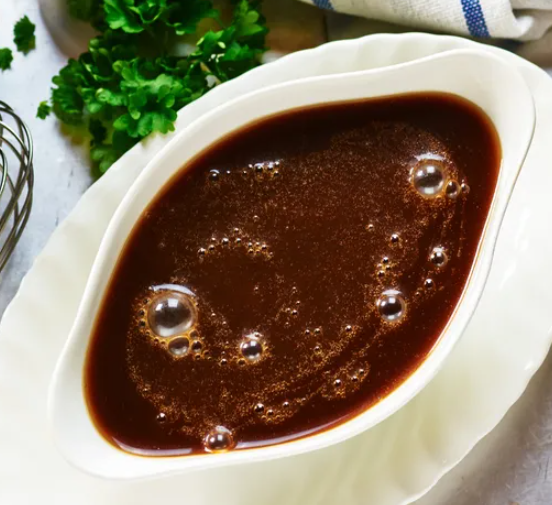
The Sauce Espagnole is a very rich Sauce and one of the five Mother Sauces according to Auguste Escoffier (1846-1935).
The Sauce Espagnole can also present itself thinner but will it be better? This is the question? The fact of the matter is that this Sauce has to be reduced but also blended to look more refined rather than rustic. But don't let it go watery, for you will then miss the entire pleasure of its taste.
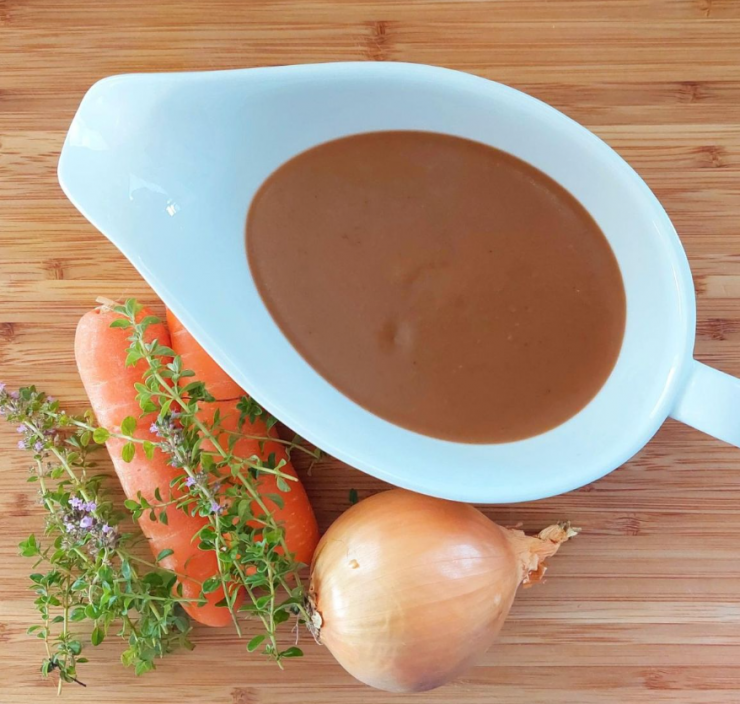
There are many ways to adapt the Sauce Espagnole to your taste, either your own or the one of your guests. A tip is to make it velvety by adding Créme Fraiche into it. It will remain thick, tasty and luscious.
This Sauce can be traced back in history a little like the Sauce Béarnaise. If we go back to Henry the fourth King of France, which was the King of Navarre too and born in Béarn. His son Louis the thirteenth did marry Anne of Austria which was actually Spanish. The story goes that she came to the French court with her own Spanish Cooks. They introduced the Sauce Espagnole then in the early part of the 1600's. However the name of the Sauce was first mentionned, printed and published in 1733 by Vincent La Chapelle, therefore around a century later. By that time the Sauce Espagnole was well established in France and foremost liked.
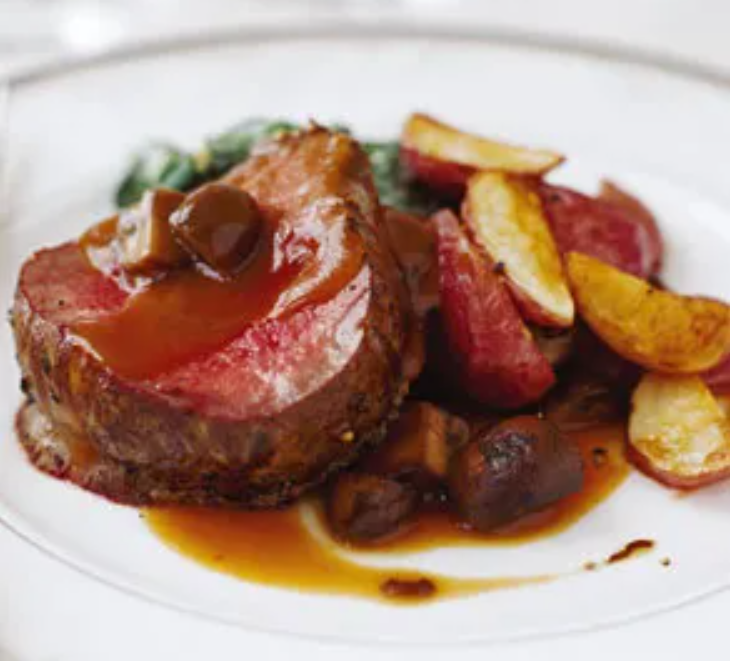
Steak and Potato Wedges served with an Espagnole Sauce which goes well with Meat.
A Sauce which has a name referring to Spain is the Sauce Andalouse which is ever so popular in Belgium to eat Fries/Chips with. The base for this Sauce may vary, again we are in the world of interpretation and versions. It could be Mayonnaise, Espagnole Sauce, and a Velouté. All of which are acceptable to make a Sauce Andalouse. One common factor is that the Sauce must have Tomatoes (Otherwise the Sauce will not have that Spanish vibe). A factor which can fluctuate is the Capsicum (Pepper) which can be either spicy or sweet or both: It is about Pimiento, Chilli and Sweet Bell Pepper. The combination of the three, the base and the two factors make a Sauce Andalouse. In fact this Sauce is similar to the Marie Rose Sauce in many aspects.
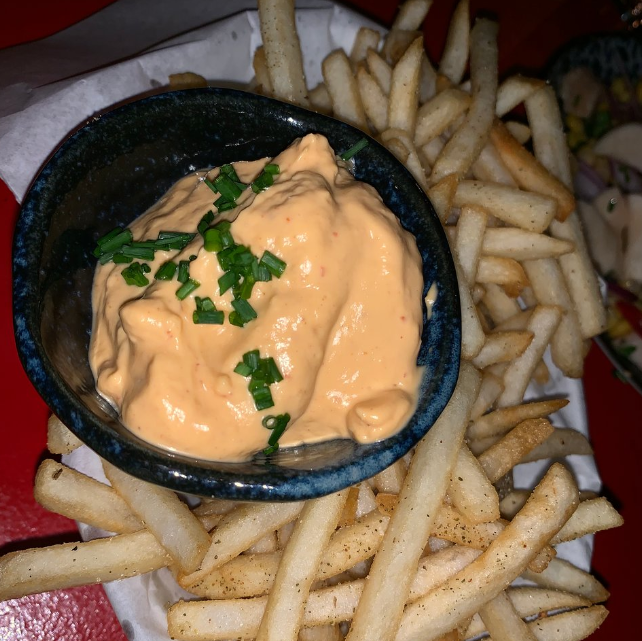
Andalouse Sauce decorated with chopped Chives to go alongside Chips.
The South West of France has been particurlarly creative with their Sauces. The next one I will mentioned is the rich Sauce Bordelaise which goes so well with Beef. Made with a Demi-Glace Sauce, enriched with Bone Marrow and Butter, the Bordelaise Sauce also benefits from the addition of Shallots, Garlic and Parsley, but with the most notoriety of Red Wine. After all the Bordelais is one of the famous areas of France renown for its Wines. The choice for this Sauce is a deep Red Wine which has the quality of being 'Sec' which means dry. It needs to have a little sharpness on the palate.
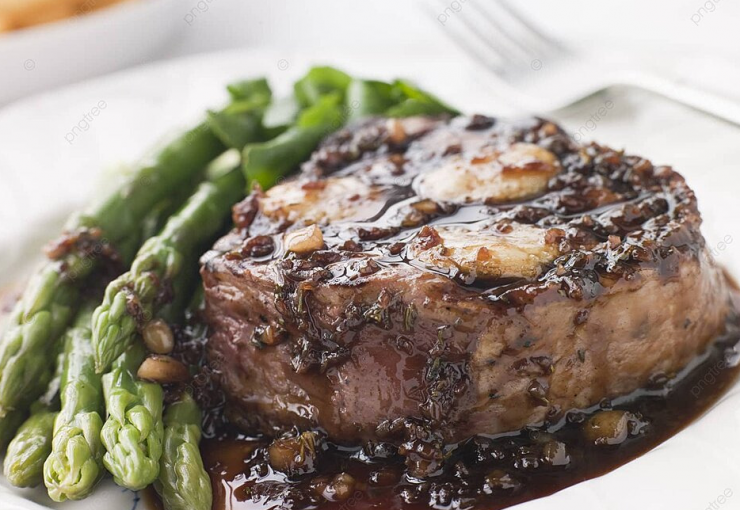
Chateaubriand Beef Steak served with Bordelaise Sauce, Green Asparagus and White Truffle shavings.
This Sauce like many did travel which means it had adaptation throughout time and culture. Therefore you have a version of it called the New Orleans Bordelaise Sauce. Louisiana was a large territory claimed by the French in the 17th-18th century. It changed sovereignty from France to the US in December 1803. Hence a little French culture was distilled within the large expense of land that Louisiana was then, which reached Canada. The old Louisiana did encompass a lot of territories from South to North. But it is History and what was left is a sort of inprint via food and linguistics. In New Orleans they do enjoy the Escargots Dish.
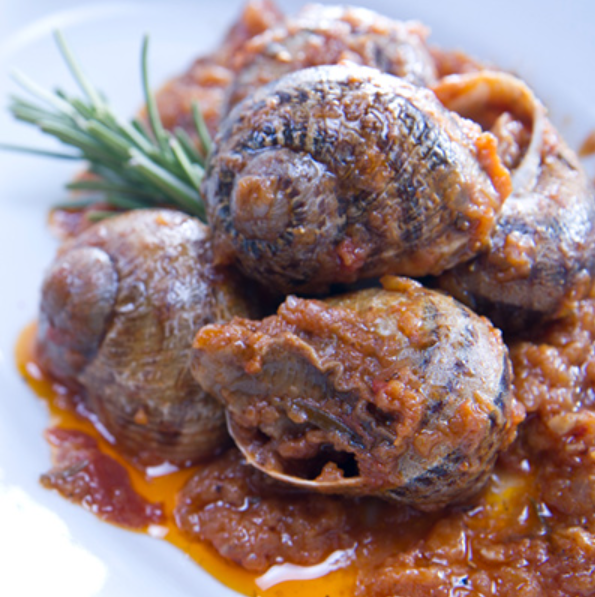
New Orleans Bordelaise Sauce with Escargots. Escargots are the French word for Snails. They are regarded as much as a delicacy as a commodity. It was poor people's food when you couldn't find anything to eat back in the days, centuries ago. Escargots are also a way to feed yourself in time of struggle.
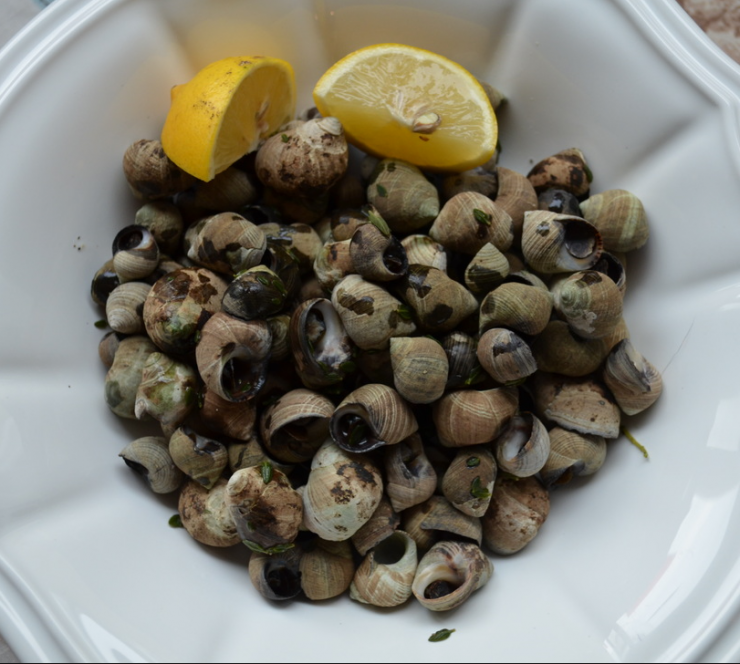
During WW2 my maternal Grand Mother taught her Children to gather food from the seashore, the rocks. It was harvesting Winkles (Periwinkles), Whelk or Bulots, Limpets, Crabs, Cockles, Clams, Oysters, Mussels, Prawns, Shrimps, Coquille Saint Jacques (Great Scallops) and even Lobsters and the odd Catfish. I can tell you that my Mum did teach us those fishing/foraging skills as well. It was passed down.
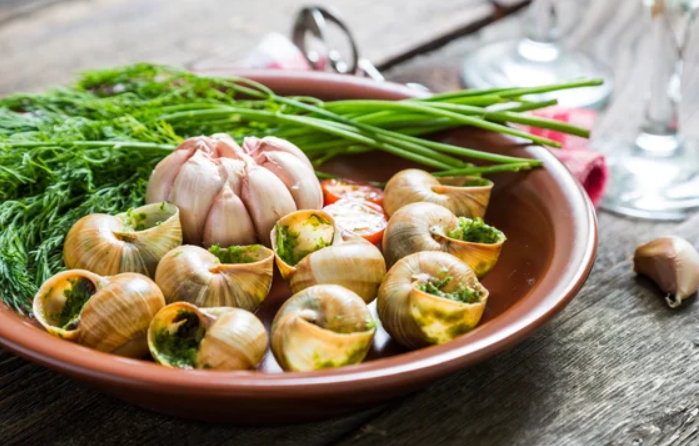
On my Paternal Grand Mother side, she taught her children to fetch not Sea Snails but Land Snails. They were living in the Bresse area of France near Burgundy. It is famous for its Escargots. When her husband was away during the Indochina War, she resorted to that to be able to feed all of her children. So from my Dad, he passed down his own foraging skills. I can tell you that I was taken to a pick up the big Snails hunt in the countryside more than once. We ended up with a starter or a meal of Garlic and Herbs Butter Escargots.
To go back to our Sauces and to forget a little the Snails that can't catch up, but to make a swift link, I will say the common link which is Herbs, the green, green grass, which makes the Snails livelihood and the Escargots more appetising on the plate. The use of Herbs is crucial to give some fragrance to a Sauce. It elevates the Sauce. The choice of Herbs is wide but the more common ones to bring flavours are Parsley, Chives, Dill, Coriander, Tarragon, Watercress, Rosemary, Thyme, Oregano... I am very partial to Tarragon as an Herb, I love it. A creamy White Wine Tarragon Sauce goes ever so well with Chicken, but also with White flesh meaty Fish.
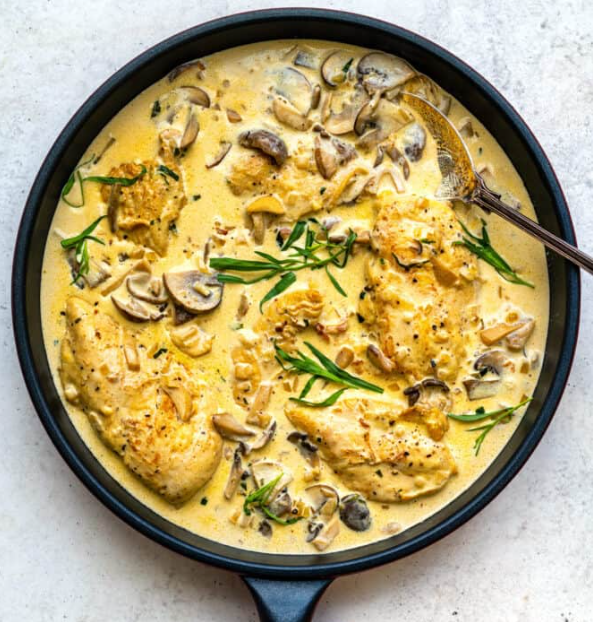
Chicken with a Creamy White Wine Tarragon Sauce. The ingredients needed for the Sauce are Butter which you melt first in the pan before adding the chopped Garlic for the little kick. Then add the White Wine, a dry Wine is best like a Bergerac or a Languedoc. It gives big flavour to the Sauce. Let the Alcohol burn off a little before adding the Chicken Broth (It does bring depth to the mix). Bring the Sauce to the boil then reduce it and the heat too. Then add little at a time the heavy Cream (The Creme Fraiche d'Isigny is perfect), the Lemon Juice will bring a sharp tang to the luscious velvety affair going on. Season with Sea Salt (We love Maldon smoked Sea Salt), and White Pepper or crushed Black Peppercorns. Put a little dash of Honey in (runny, Orange Blossom one is fab but also Pine, Heather or Acacia) . Last but not least, it will be the time for the chopped Fresh Tarragon to go in. Fresh is better than dehydrated, it will bring forward the aniseed flavour fast and forward. To complete pour the Tarragon Sauce over the braised Chicken, sautéed Mushrooms and Shallots. Let everything simmer gently for five minutes. It goes without saying that the Chicken is being cooked while you are preparing the Tarragon Sauce. There I would recommend to go for Chicken Breasts, or Thighs. It does cut time but not taste.
Another herby Sauce which I do use a lot is the Parsley Sauce. It is an old classic which is so easy to do. A Béchamel or White Sauce is the start of a Parsley Sauce which you can build up with more flavours by adding Lemon Juice, Mustard (For the Mustard you have the liberty to chose the one you do prefer: either English Mustard, Yellow Mustard, Dijon Mustard) and Seasoning. Then comes an entire bunch of chopped Parsley. The choice of Parsley could be either Flat or Curly. There is a myth that Flat Parsley is better culinary wise than the other when both are actually good. The tendency is to regard Curly Parsley as decorative. But I will tell you a secret Flat Parsley is considered better by the Chefs because it is easier to chop... Food for thought.
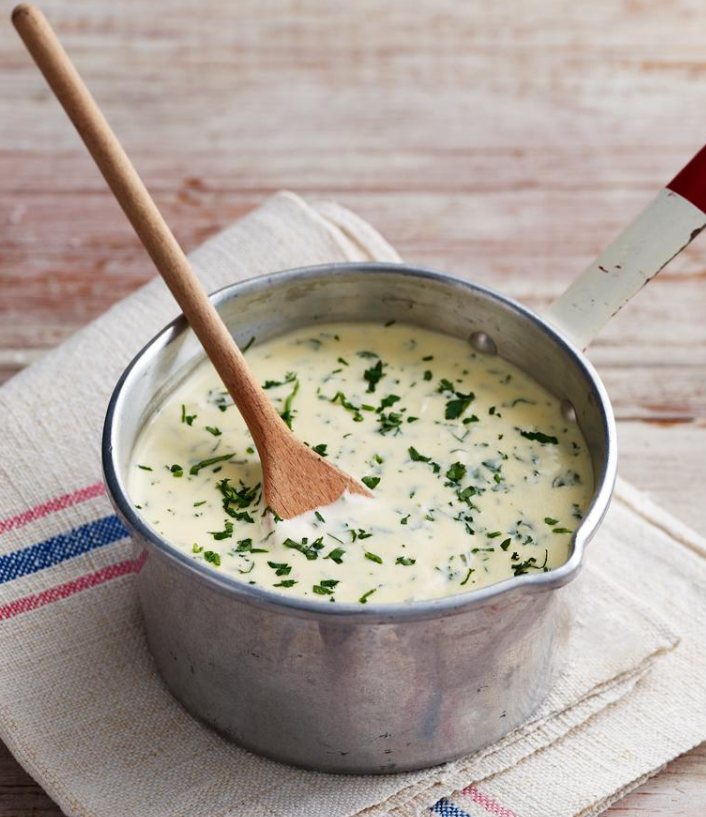
A Parsley Sauce goes well with Fish, Ham, Gammon but also Veg like Baby New Potatoes, Beetroots, Green Beans etc... Enhanced with a splash of Honey, the Parsley Sauce works wonderfully with roasted Parsnips too. And a drizzle of Parsley Sauce can finish to top a Soup, to decorate it and give it that extra WOW factor. For exemple the humble Potato and Leek Soup can always do with a white and green lift of Parsley.
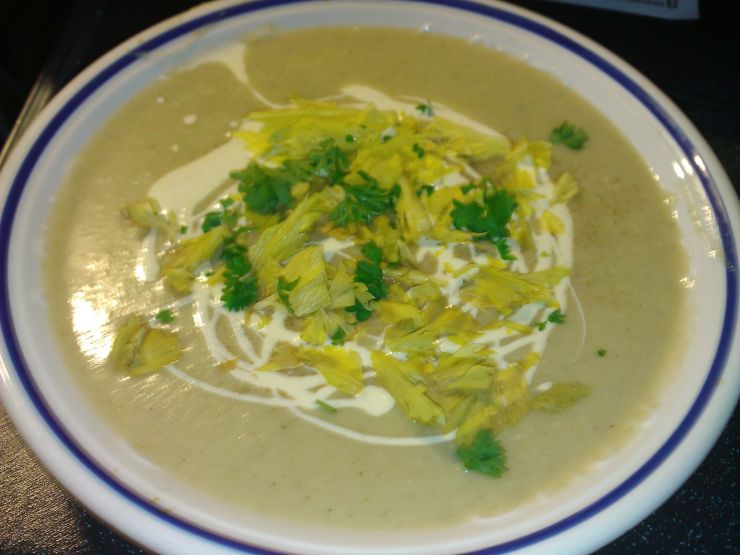
This is a Celery Soup decorated with Parsley and Celery Fronts.
To go back to Parsley, I do grow it in my Garden, both kind: Flat and Curly but also Coriander. I must say that I like them all. It is so useful to have Culinary Herbs like that at your doorsteps. They can be hard to grow because you do need to find the right spot in your Garden. It took time for us to be truly successful at it. But eventually, we did hit that bingo moment. The pay off is that you can do a Parsley Sauce, a 'Persillade', Chimichurri and garnish your Dishes.
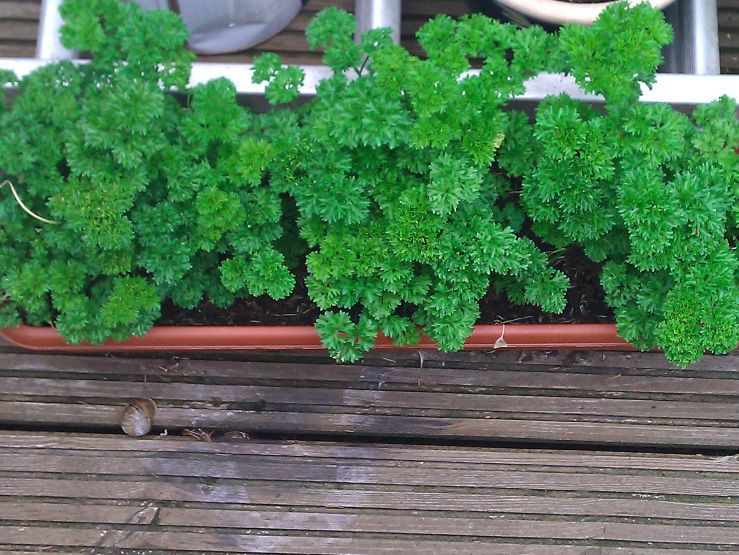
Curly Parsley, we are using it as much as Flat Parsley.
For a Persillade which is a Sauce full of Parsley, I do use both types of Parsley, Flat and Curly. There is no discrimination on that one. Tarragon, Chives and Oregano can come into the mix. Garlic is essential to a Persillade so is White Wine Vinegar because they give it a kick. A good Olive Oil binds the Persillade together (It could be a Garlic flavoured Olive Oil). Chopped Shallots although optional will not go amiss in terms of taste. There are lots of optionals Ingredients here which can bring a Persillade to sing like the Castafiore, like Lemon Juice and Zest. It is the zing factor. For saltiness, you can think of either chopped Anchovies or Capers or both to add to the Persillade Sauce. For Pepperiness you can crush some colourful Peppercorns. For Texture you can sprinkle some Breadcrumbs upon the Persillade. The texture should look like the one of a light Pesto.
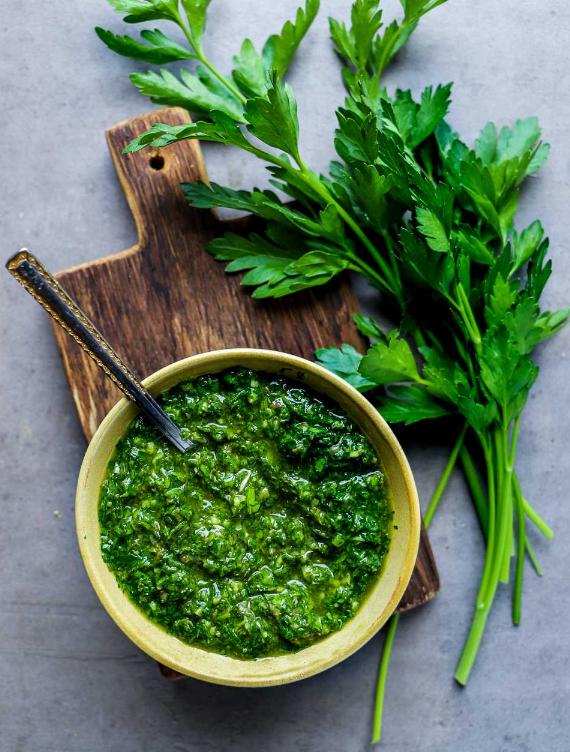
The Persillade Sauce brings colour to a plate but also flavour. It does pair really well with Lamb, Mutton, but also Shellfish, Fish and Vegetables.
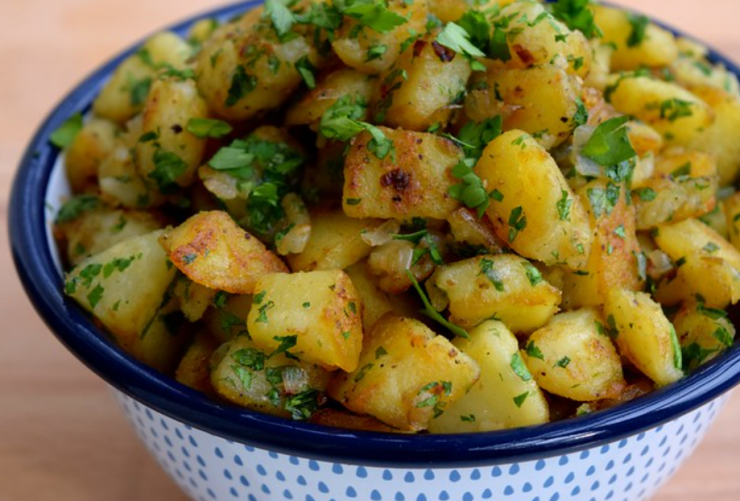
Sautéed Potatoes can do with a Persillade or a Butter, Garlic, Shallots and Parsley Sauce with a good dash of Lemon Juice or White Wine Vinegar.
Another Sauce using Parsley is the Chimichurri. It is very similar to a Persillade. However it is from Latin America especially Argentina and Uruguay. This is because of the impetus of the Spanish immigration there between the 15 th century and the 19 th. Many Basques also settled in Argentina during the 19 th century. This Sauce is a combination of cultures in motion, blending together. Although being a cold Sauce it does have warmth to it because of the spices within it.
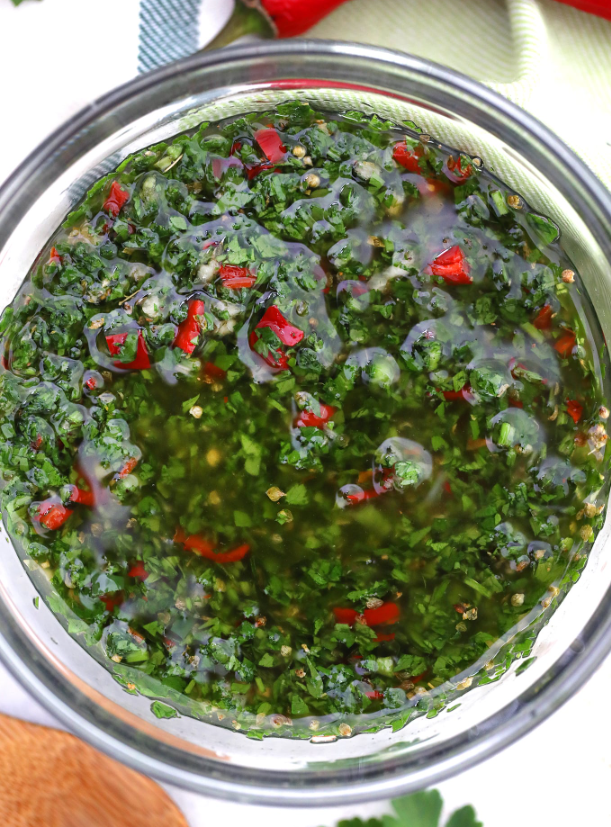
Chimichurri Verde: chopped Parsley and Oregano are mixed with Red Wine Vinegar, Olive Oil, minced Garlic, and Red Chilli Flakes, Sea Salt and crushed Peppercorns. Those are the basic Ingredients.
For Chimichurri, you can add optional Ingredients to bring more to the Sauce. Lemon Juice or Lime Juice will make the Sauce zing. You can also include a little Lemon/Lime Zest. Chopped Shallots, or Red Onion, or Spring Onion or a Spanish Onion can be part of this Sauce as well. It is a matter there of choosing your favourite Onion according to your taste. Shallots for exemple are sweeter than Onions. Chopped Chives which is part of the Onion/Allium family could be considered as well. It also add to the green colour of the Chimichurri Verde. For dashes/accents of colour and flavour an optional must is a chopped Red Chilli Pepper. If you like it spicy, Cayenne Chilli Pepper is the one usually recommended.
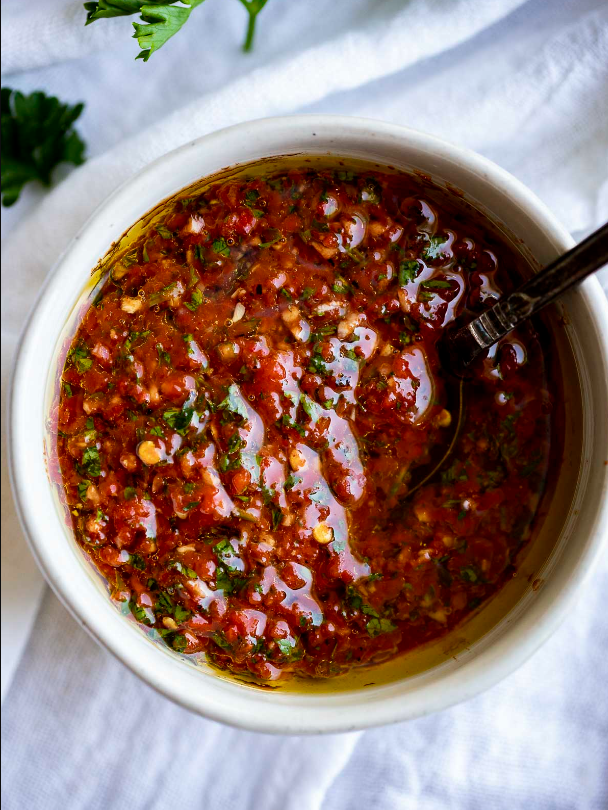
Chimichurri Rojo. This is the red Chimichurri which has for main Ingredient Red roasted Sweet Bell Peppers. It works for contrast of colour as the opposite of Chimichurri Verde. It is mainly red with dashes of green as the accent. (Sometimes as a cook you must think like a painter, an artist). Of course the green is provided by Parsley (which can be substituted by Cilantro/Corriander).
The Chimichurri Rojo has similar Ingredients as the Verde one but in an inverse kind of balance. The emphasis there is upon the Red Sweet Bell Pepper. There are various ways to deal with it. I will say a simple way is to buy the Peppers, already roasted and preserved in a jar then to chop them. Another way is to roast the Sweet Bell Peppers. It takes about 30 minutes, gas mark 5 (Make sure you pour over the deseeded Peppers a good drizzle of Olive Oil.) You can roast with them your Chilli Pepper, but remember which one is which to avoid any incident while handling them afterwards. Another essential add is Smoked Paprika. To make the Chimichurri Sauce (either Verde or Rojo) is pretty simple. It is a cold Sauce used to baste but also serve with grilled Meat, Fish or Veg.
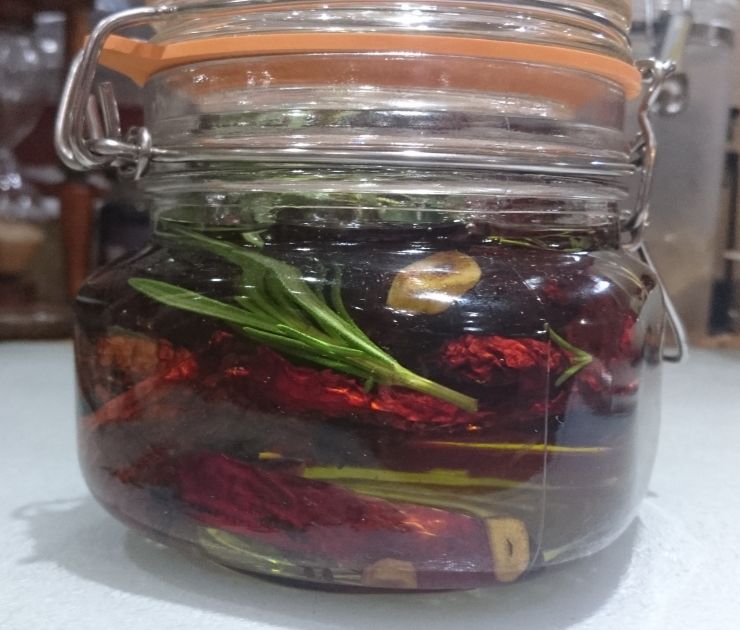
Preserving if you do grow your own Chillies is always useful. I dry them in the oven prior to jarring them. It is a great thing to have in the pantry or fridge.
Speaking about Chillies, we must mentionned of course another Sauce using them which is the Sweet Chilli Sauce. The Sweet Chilli Sauce is sweet because of the inclusion of Honey within it. Its sweetness can also be provided by refined Sugar or, and Fruits.
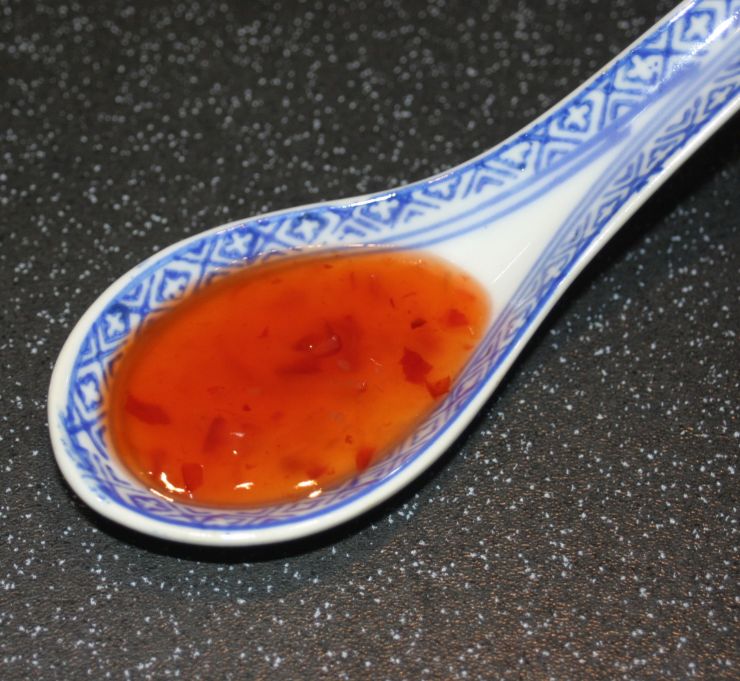
Sweet Chilli Sauce: Sweet and Spicy at the same time with a lovely consistency.
If the Sauce is home made and not shop bought, you do have that freedom of using the Chillies you want, may it be home grown Chillies or shop bought Chillies or from a Chilli Farm acquired ones. The choice there is entirely yours for the Chillies to use. The convention is to go for a Red Chilli which they are many varieties of (Fresno, Thai Red Chilli, Cayenne, Red Jalapenos...). The wisdom is to choose the Chilli according to your palate therefore to follow the Scoville scale for the heat of a Chilli because you don't want the Sweet Chilli Sauce to be too fierce. A gentle kicking tingling warmth is the goal.
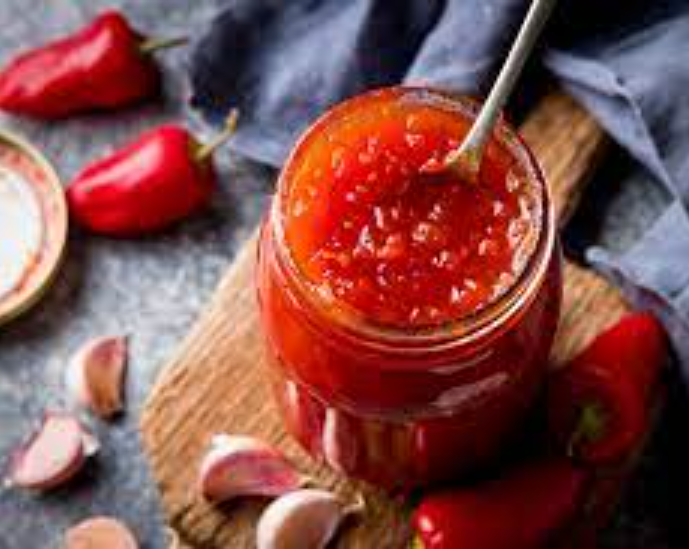
Poured in sterelised jars, you can keep your Home Made Sweet Chilli Sauce for about a month to six months. I store mines in the pantry which is dark and cool but once opened, it is strictly in the fridge. The Vinegar within the Sauce is a preserving agent.
I regard Sweet Chilli Sauce more as a Dip. Created in Thailand, this Sauce became popular worldwide. It goes ever so well with Fried Food such as Chicken Wings, Chicken Drumsticks, Fried Chicken in general, Spring Rolls, Nams, Fried Seafood, Samosas, Prawn Toasts... The list can go on. Apart from Chillies, the main Ingredients are Sweet Bell Peppers, Tomatoes, Sugar or Honey, Rice Wine Vinegar, Fish Sauce, Ginger and Garlic.
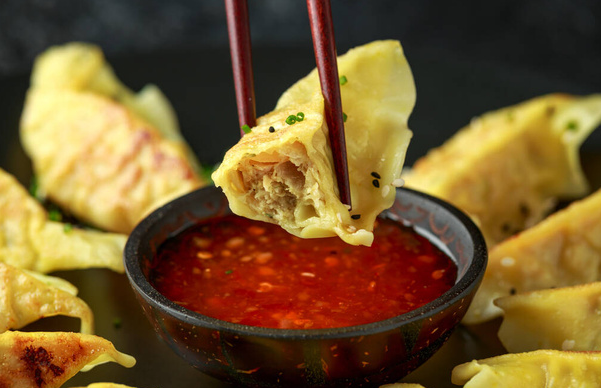
To get a Sweet Chilli Sauce right is rather a balancing act. The quantities of every Ingredient are crucial but also their qualities. In the equation comes as well the strength of the Chilli you are dealing with. It is important to keep this Sauce sweet despite the warmth it provides to the tastebuds.
Another Sauce originating from Indonesia is the Peanut Sauce also called the Satay Sauce. For the Peanut Sauce of course the main Ingredient is the Peanut. As for many Sauces, there are plenty of variations upon the Peanut Sauce. The texture can range from the crunchy side to the watery one passing by the more smooth and velvety. Of course it all depends of the treatment of all the elements especially the Peanuts.
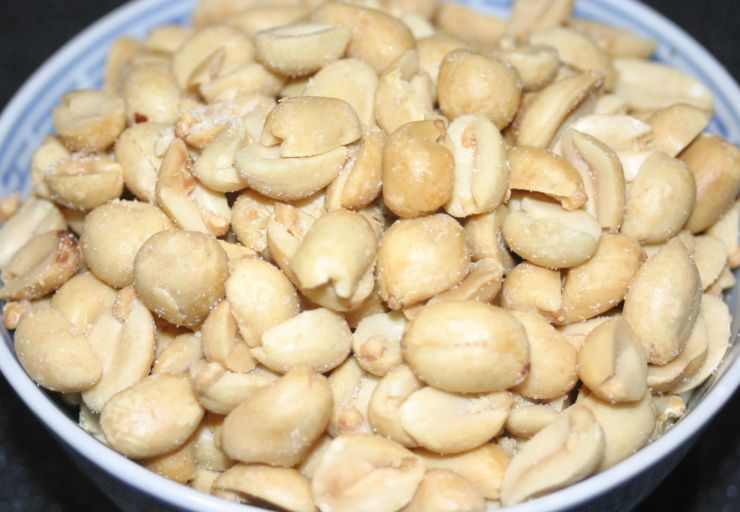
Lightly Salted Roasted/Toasted Peanuts can be a good base for a Peanut Sauce. You can crush them with a pestle and mortar or just blend them in a mixer. Alternatively you can make your Peanut Sauce with Peanut Butter, either crunchy or smooth depending upon your taste or whatever you aim to achieve.
With a Peanut Sauce, you can start from scratch or make it easier on yourself by getting Peanut Butter. Adding Coconut Milk balances the flavours to reach a rich velvety sweetness. The other Ingredients are Soy Sauce for a little saltiness, Tamarind paste for that sweet and sour notes to the Peanut Sauce (Tamarind is rich in Magnesium and Calcium), Galangal which you can find in many ways: paste or roots to be grated or minced. Galangal is similar to Ginger but a tad stronger. It is also more zingy in terms of taste. It does have a citrus vibe to it. Minced or puréed Garlic is one not to miss as well as an Ingredient. A tip is to roast the whole Garlic bulb within its skin to then just press the pulp out. It does render it sweet and less pungeantly sharp.
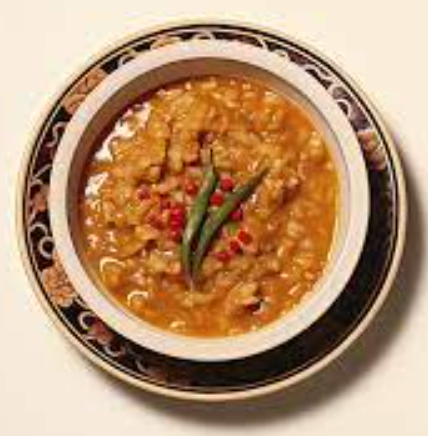
Optional Ingredients are Spices like grounded Cumin, Coriander, Szechuan Pepper. Sugar, like Palm Sugar or Honey can balance the Peanut Sauce to give it more sweetness. Then a chopped Thai red Chilli, deseeded or not, can add to the strength of the Sauce with its heat, or a good pinch of Chilli Flakes. It also gives colour and more flavours just like Thai Basil Leaves, Spring Onions and Coriander Leaves. Lemongrass and a squeeze of Lime Juice along with Lime Zest could also be considered. If Water can bring to the Sauce a thinner texture, why not trying to use Coconut Water for more flavour but also a dash of Sesame Seeds Oil.
The Peanut Sauce is mainly used for Satay Skewers (Chicken and Beef) but also with Noodles and Vegetables. It can be employed to enhance a Salad or a Stir Fry because it is so versatile. The Peanut Sauce is also a good Dip to enjoy and can do a good Marinade prior to cooking Meat. The Coconut Milk within it induces the process called silking. It tenderises the Meat.
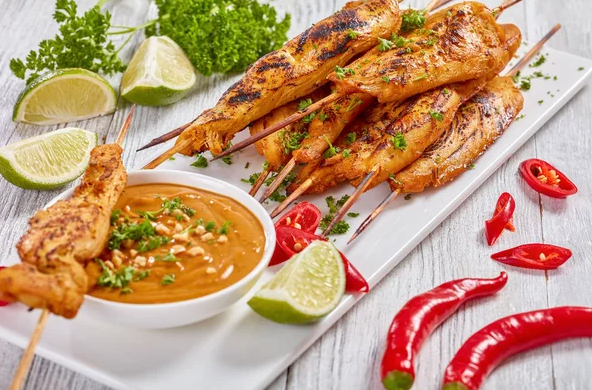
Chicken Satay with Peanut Sauce.
Nuts have been used in Sauces to give them taste and texture since a very long time. A similar Sauce to Pesto was being done and recorded during the Roman period. Pesto has usually Pine Nuts as an Ingredient. But it may be different given the time in history and geographic place. But also the inspiration of cooks to create something similar with what they have at hand which can be economic or ecologic or very basic (like I haven't got Pine Nuts at this moment in time so I will find a substitute). It can be a there and then story.
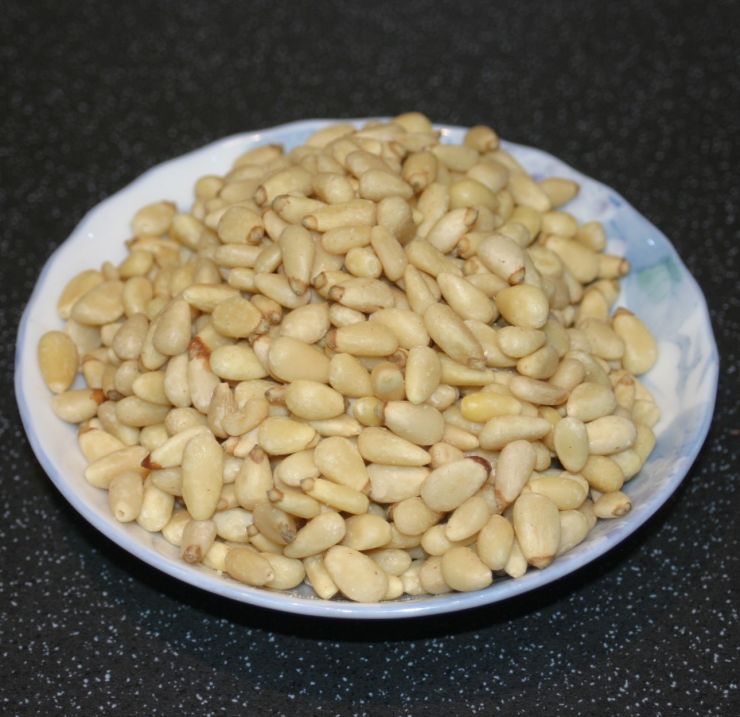
Pine Nuts: They are delightful in Salads and within Pestos. You can eat them like that, or toasted, baked. They make a good addition into Sauces.
-When we speak about texture Nuts are the right Ingredients to use for a Sauce or a Paste, like the Pesto which is a Sauce with more body. And like every Sauce the Pesto has many, many variations. The term Pesto comes from Latin but also Sanskrit. Its meaning in Euro-Asian languages, at the root, means to grind, ground or to pound. Hence Pesto means a Paste. The root of the word can also be found in Pestle and Mortar which is used to grind, ground and pound.
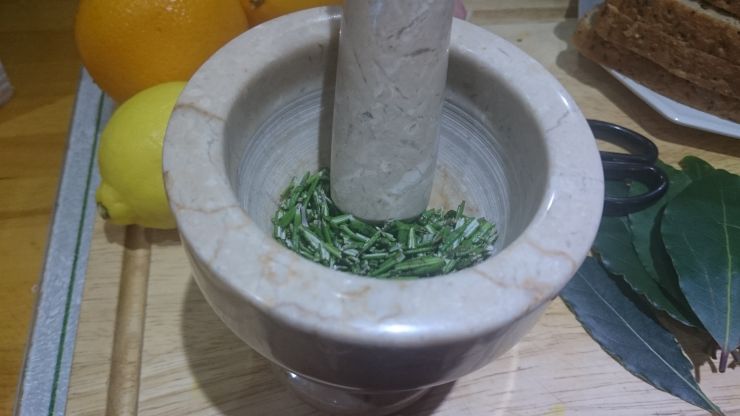
Pestle and Mortar or Mortar and Pestle (however the way you prefer it to sound) has been an ustensil for food preparation for thousands of years. We are talking in terms of tens of thousands of years here, from archaeological evidences roughly between 40 000 BC to 30 000 BC. Matter de facto is, even with a blender at home, we are still using them in the kitchen. This is because with your own eyes, experience, traditions, expertise, your own taste, you do know what your handywork wants to achieve but for the blender less so. It is back to the three Ts (Taste, Test and Trial).
We all know Pesto to be mainly used with Pasta and Risotto. The origins of the Pesto is claimed by Italy and specifically by Genoa. The principal Ingredients for an original Pesto are Basil, Garlic, Pine Nuts, Olive Oil, and grated Hard Cheese. However you always have the freedom to try variations like the Sacla company did to great effect. We do use their Pesto very often. When I say very, I will magnify it times thrice: very, very, very often. They did inspire me to create my own Pestos with some of the produces of my Garden.
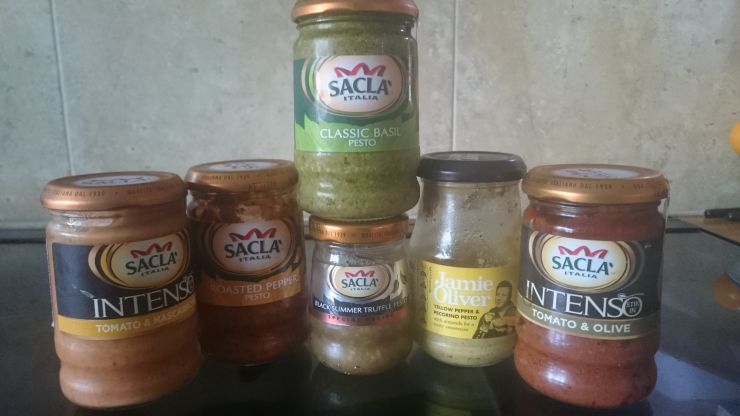
Sacla is a small company which was born in 1939 in the North West of Italy, the Piedmont, in a small town called Asti. It is a family business and still is. Their Pestos are numerous and as I said inspirational in terms of their choice of Ingredients.
As Pesto is a Paste, it does give that freedom to create it with what you think could make a good Pesto. It could be roasted Sweet Bell Peppers, Tomatoes, Sundried Tomatoes, Mascarpone, Olives, Chillies, Truffles, Ceps, Parmigiano, Pecorino, Ricotta Cheese, Aubergines, Walnuts, Almonds, even Pistachios. Don't choose all the Ingredients but just pair well two main ones or three to have a good base of flavours to work upon.
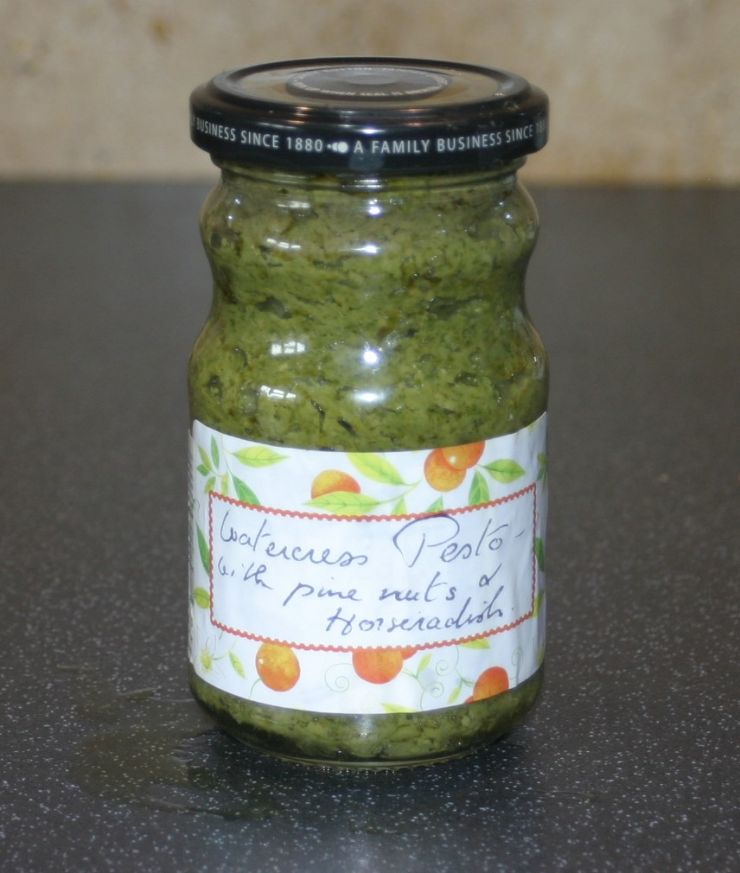
From one year to another, if you have a Garden, a Balcony or a Windowsill but also are growing your own Veg and Herbs, you may find yourselves to have to tackle with what the gardener's jargon calls a glut. Then preserving can be the way do deal with the surplus. For me one year, it was Watercress. I did jars of Pesto with it and push a little further the pepperiness of it by adding Horseradish within the combination. That Pesto worked ever so well with red Meat especially Lamb and Beef. It has a little welcomed bite to it. Depending on the methods, fridge or freezer, to keep the Pesto it is then about a week in the fridge but up to three months in the freezer.
When we speak about Pesto we must mention how versatile it is but how it varies from area to area. Pesto Genovese or alla Genovese is considered as the classic and authentic Pesto which means that it includes Basil, Garlic, Pine Nuts, Hard Italian Cheese and Olive Oil. Then you have the Pesto Calabrese which I do rate a lot. It originated from Calabria in Italy. It is a Red Pesto mainly done with Red Sweet Bell Pepper (Charred or Roasted), Sundried Tomatoes, Pecorino Cheese and Ricotta, Almonds or Pine Nuts, Garlic, Olive Oil, and Chilli Flakes (or an entire Red Chilli). Creamy but also spicy Calabrese Pesto packs a little punch on the taste buds.
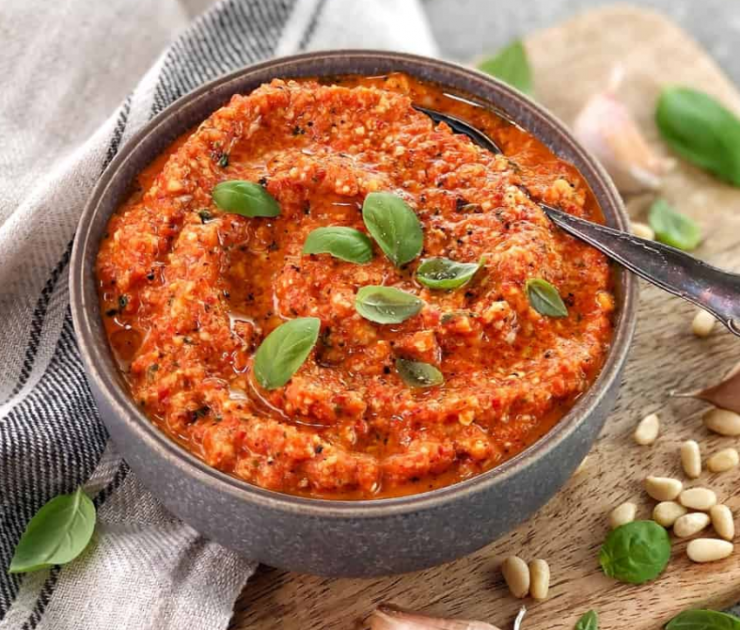
Calabrese Pesto. There are multiple versions of it. It can also be called Red Pesto or Pesto Rosso. It can come in different shades of red depending upon the Ingredients used, the Ricotta Cheese making it creamier but also the Almonds. Basil or/and Oregano gives to this Pesto the aromatic twist needed to remind you of the Mediterranean shores.
Another Red Pesto is the Sicilian one, also known as the Pesto alla Trepanese. One main Ingredient there is the small and sweet Ciliegino di Pachino Tomato. In this Pesto, Tomatoes take the centre stage as per say. Those Tomatoes are slightly smaller than Cherry Tomatoes. The essence is almost a condensed sweetness which got those little Tomatoes a PGI designation but also a rating on the Brix Scale. Trepanese Pesto is also made with Almonds rather than Pine Nuts. For Almonds are more abondant in Sicily. Chilli Flakes are usually part of the mix to give that Pesto even more vibrancy.
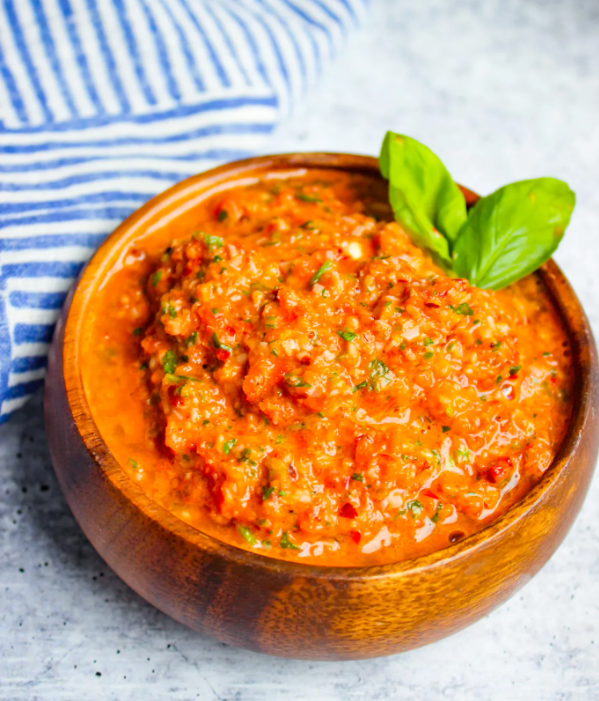
Sicilian Pesto or Pesto alla Trepanese.
Talking of Nuts especially the Pine ones there is an ecological controversy which is going on. Although Pine Nuts are sustainable, the large consumption of them deprives the ecosystem hence the Birds, Animals feeding upon them. The other consideration has to do with air miles. Some Pine Nuts come from Russia, China, Korea, Spain, Portugal, Italy, Turkey and Pakistan. But I will say the same can be told with other Nuts just as well. Anyhow I tried a Pesto done with Walnuts instead of Pine Nuts and Spinach instead of Basil, it was from a website called Allrecipes.com. It was nice.
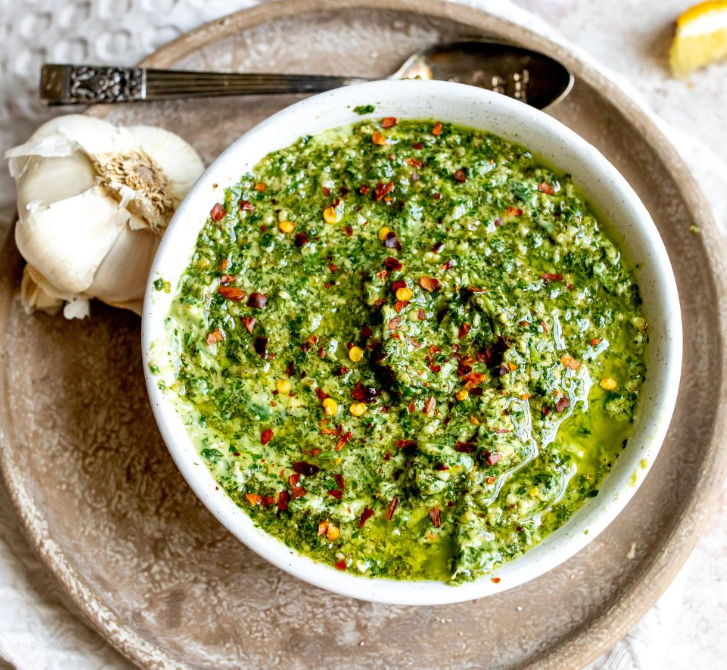
Spinach and Walnut Pesto with Chilli Flakes. This time the blender or hand held blender is better to achieve a good and smoother consistency. The harder the Nuts... the harder it is to mix.
